

How Big Are Yachts? 5 Types Explained (With Numbers)
Yachts can come in a variety of sizes and weights. Before you purchase a yacht, you must know what size yacht you need.
The size and weight of the yacht that you need will depend greatly on what your intended use is for the yacht that you are purchasing.
Table of Contents
Here’s everything you need to know about the weight of yachts:
Here’s an Idea of How Big Yachts Are:
The term “Yachts” refers to a pleasure vessel that is at least 30 feet in length and has some type of cabin with some amenities. The biggest luxury yacht is 590 feet (180 meters) and 13,136 gross tons.

What Do We Mean When We Talk About Weight?
There are two types of weight for a boat, dry weight, and wet weight.
Dry weight is the weight of the boat without any fluids in the tanks. Wet weight is the weight of the boat with the fluids in the tanks.
You can also have a loaded weight, which is the wet weight, including any additional toys or equipment you have stored onboard.
What Do We Mean When We Talk About Length?
There are many different ways to calculate a boat’s length. For this reason, you want to make sure that you have a clear idea of what the length of your boat really is.
The boat’s registered length is generally the maximum overall length, which is the length on deck plus any bowsprit or swim deck. The length of the boat on the waterline is also an important boat characteristic that you should know.
Due to the shape and construction of the hull, these numbers may differ.
For example, if you have a boat that has a 50-foot deck with no bowsprit, your registered length will be 50 feet.
Some boats are measured using “LOA,” otherwise known as length overall.
Why Is Knowing The Weight And Length Important?
The most important reason to know your boat’s weight and length is for when you choose to shop for trailers or even to determine if your vehicle can haul it.
If you try to tow a boat without an accurate representation of the weight or length, you can ruin your vehicle’s engine and even your towing equipment, not to mention have serious safety issues.
Another reason to know about your vessel’s weight is to know how much you can bring for your trip without packing more than the maximum weight allowed.
It is also important to know your weight and how it can affect your boat, especially when it comes to speed.
Different Types of Boats and Their Average Weight and Length
Below are some different types of boats and their average size and weight, and the factors that go into them.
1. Luxury Yacht

Yachts are normally classified as any watercraft that can be used for pleasure or sport and can range from 30 ft to over 100 ft.
While a yacht can be as small as 30 ft. long, a yacht is often considered a cabin cruiser until it is 39 ft. or more, then it is considered a proper yacht.
A yacht would be considered a large yacht once it’s length is over 79 feet. A yacht is considered a superyacht or megayacht if it is over 115 feet long.
The yacht the holds the record for being the longest yacht is 590 feet long. This yacht is called the “Azzam” and has held onto its title for over 5 years.
Because of the wide variety of sizes, the weight can vary greatly when it comes to yachts, and it is hard to nail down an average.
Some more distinctive differences between yachts include:
- These yachts are single-deck yachts with one living quarter below . They are often sleek and sporty.
- Also known as a sedan bridge or sport bridge yacht. This yacht has an area on top of the superstructure that features a view all the way around the vessel.
- This deck up top can offer a control station or even lounge seating, depending on its size.
- Also known as a pilothouse motor yacht, cockpit motor yacht, or sky lounge. This term can be used for any large recreational vessel that is motor powered.
- Usually, this means a multi-deck vessel similar to a flybridge but instead has a large interior deck.
- Often classified as a mega yacht, which is normally any vessel 80 ft. or more. This vessel is exactly what it sounds like.
- It is a yacht with three levels of enclosed living space.
- A sportfishing yacht is any yacht that is geared towards fishing.
- They often have areas designated to storage for rods, bait, tackle, and even areas to store the day’s catch.
2. Sailboats

Large sailboats are yachts propelled by sails and can be found in lakes, rivers, and even out on the ocean. Today, they almost all have auxiliary power in the form of an engine.
While the weight and length of a sailboat can drastically vary, the average weight of a sailboat is about 8,800 pounds. This weight does not include added gear, equipment, or fluids.
The weight will vary greatly depending on the length of the sailboat. Sailboat lengths can range between 8 feet to 472 feet.
The 472-foot sailboat also carries three masts that tower at over 91 feet each. This can definitely add more weight than the 8-foot vessel.
Listed below are 6 examples of sailboats and their weights and lengths:
- Catalina 16 LOA: 16 ft. 4 in. Hull Weight: 430 pounds
- Hunter 22 LOA: 21 ft. 4 in. Hull Weight: 3,200 pounds
- C&C 27 LOA: 27 ft. 4 in. Hull Weight: 5,180 pounds
- Erickson 28.5 LOA: 28 ft. 7 in. Hull Weight: 8,500 pounds
- Pearson 39 LOA: 39 ft. 3 in. Hull Weight: 17,000 pounds
- Swan 48 LOA: 47 ft. 11 in. Hull Weight: 36,000 pounds
3. Speed Boats (Cigarette Boats)

Speed boats are sleek and built for achieving high levels of speed.
These boats are not made for watersports and should not be confused with ski boats.
A speed boat’s average weight is slightly less than that of a sailboat at roughly 8,000 pounds.
Some of the factors that determine a speed boat’s weight can include their length, engines, and sleekness.
Listed below are some examples of speedboats and their weights and lengths:
- Cigarette 38 Top Gun LOA: 37 ft. 8 in. Hull Weight: 9,175 pounds
- 32 Thunder Cat LOA: 32 ft. Hull Weight: 5,400 pounds
- M35 LOA: 35 ft. 4 in. Hull Weight: 9,250 pounds
4. Deck Boats or Pontoon Boats

Deck boats and pontoon boats both have large decks and are mostly intended for recreational use.
Pontoon boats have the lowest average weight at 3,100 pounds .
Because they do not have large hulls, they can be lighter and cut across the water easier than boats with larger hulls.
Listed below are some examples of deck boats and their weights and lengths:
- NauticStar 211 Angler (Deckboat) LOA: 20 ft. 9 in. Weight: 2,100 pounds
- Stingray 212SC (Deckboat) LOA: 21 ft. 11 in. Weight: 3,100 pounds
- Hurricane SunDeck 2690 LOA: 26 ft. 4 in. Weight: 4,475 pounds
5. Cabin Cruisers

Cabin cruisers are large boats that are sometimes looked at as mini-yachts.
These boats allow for sleeping accommodations and other luxuries afforded in their cabin space.
Like the sailboat, a cabin cruiser’s weight can vary. However, they do tend to have a smaller range than sailboats.
The average weight of a cabin cruiser is about 8,700 pounds.
One of the major factors in the weight of cabin cruisers is the size of the sleeping accommodations below. Some models of cabin cruisers can even sleep up to 10 people.
Listed below are some examples of cabin cruisers and their weights and lengths:
- Larson 274 Cabrio LOA: 28 ft. Dry Weight: 6,001 pounds
- Rinker 301 Express Cruiser LOA: 32 ft. Dry Weight 7,640 pounds
- Bayliner 285 SB LOA: 28 ft. 9 in. Dry Weight: 8,056 pounds
Picking a Yacht:
Yachts can vary in a wide array of sizes, weights, styles, and even purposes.
You can race them, fish on them, and cruise around at an easy pace.
You can take a day trip or even take personal cruises that last days or weeks.
With ample deck and cabin space that offers activities, sunbathing, kitchens, lounges, and sleeping quarters, a yacht is often the most comfortable way to experience the open water.
To choose a yacht, you will want to know what type of yacht you are looking for and what you want to use it for.
You also want to make sure when picking a yacht; you make sure you keep the weight and length in mind to make sure you have a proper towing vehicle and trailer for your vessel.
Click to share...
At What Size Is a Boat Considered a Yacht? (Does Size Matter)
As a yacht enthusiast, it can be exciting to explore the numerous options available to you. Size does matter, but it is equally essential to consider the yacht's ability to entertain and its overall design. Ultimately, the perfect yacht for you is one that meets your personal preferences, budget, and unique needs, ensuring a memorable and enjoyable experience on the water.
In essence, a boat is typically considered a yacht when it reaches over 40 feet in length. However, size alone does not guarantee that a boat will be classified as a yacht. There are other factors at play, such as purpose, design, and the manufacturer's intention.
There is no specific cutoff size that distinguishes boats from yachts. Typically, a yacht is a private pleasure ship at least 40 feet long, while others consider boats over 80 feet to be yachts. It's also important to note that luxury and custom designs often separate yachts from standard boats. Let's examine these features below.
- The term boat commonly refers to smaller vessels or those under 40 feet.
- Yachts are generally 40 or 80 feet, depending on who you ask.
- There are various classifications of yachts, such as mega-yachts and super-yachts for those above 200 feet in length.
- Yachts are primarily designed for pleasure, recreation, and socializing, so size plays a key role in offering more advanced features, comfort, and space to accommodate groups.
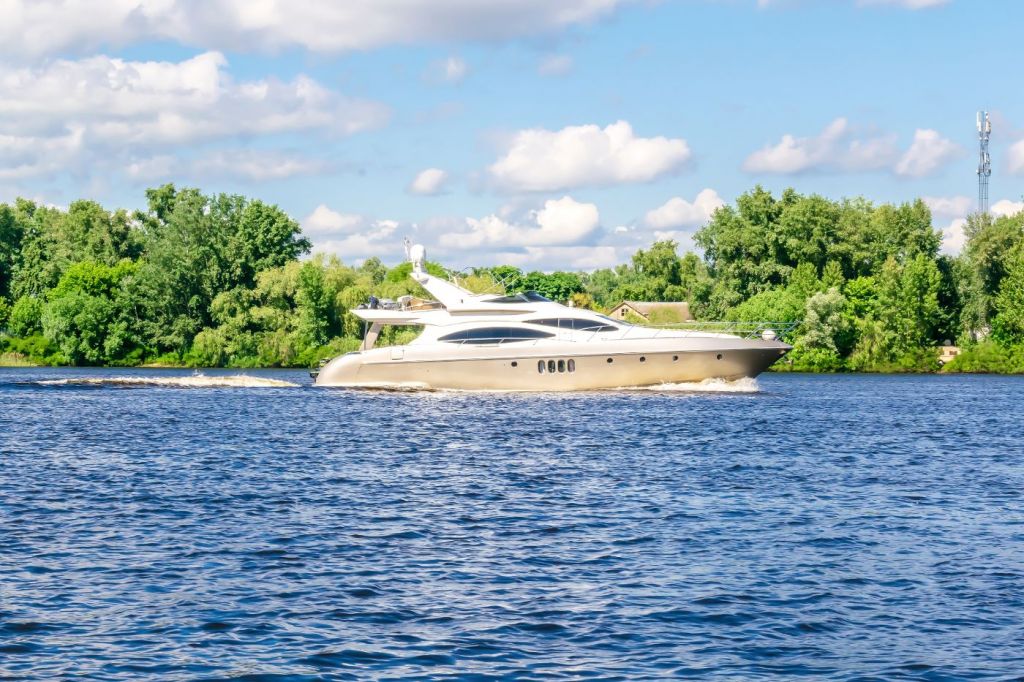
On this page:
Defining a boat and a yacht, does size matter in classifying a yacht, the impact of length on yacht classification, other factors influencing yacht classification.
A boat is a general term for various seafaring vessels, ranging from smaller personal watercraft to larger passenger crafts. Boats can be found in numerous shapes, sizes, and purposes, from fishing boats to speedboats. While there is no strict rule about the category a boat falls into, the term " boat " is commonly reserved for smaller vessels.
On the other hand, a yacht is considered a private pleasure ship, usually associated with luxury and leisure. Size is the most crucial factor when differentiating a boat from a yacht. Yachts are generally 40 feet or longer, although many people consider a boat to be a yacht when it reaches 80 feet in length. This distinction can vary between individuals and organizations, but it is widely accepted that yachts are larger than boats .
Though size is the primary factor in defining a yacht, other aspects play a role, including the vessel's purpose, design, and luxury amenities. The term " yacht " often implies a certain level of opulence, suggesting not just a boat for recreational purposes but also a symbol of status and wealth.
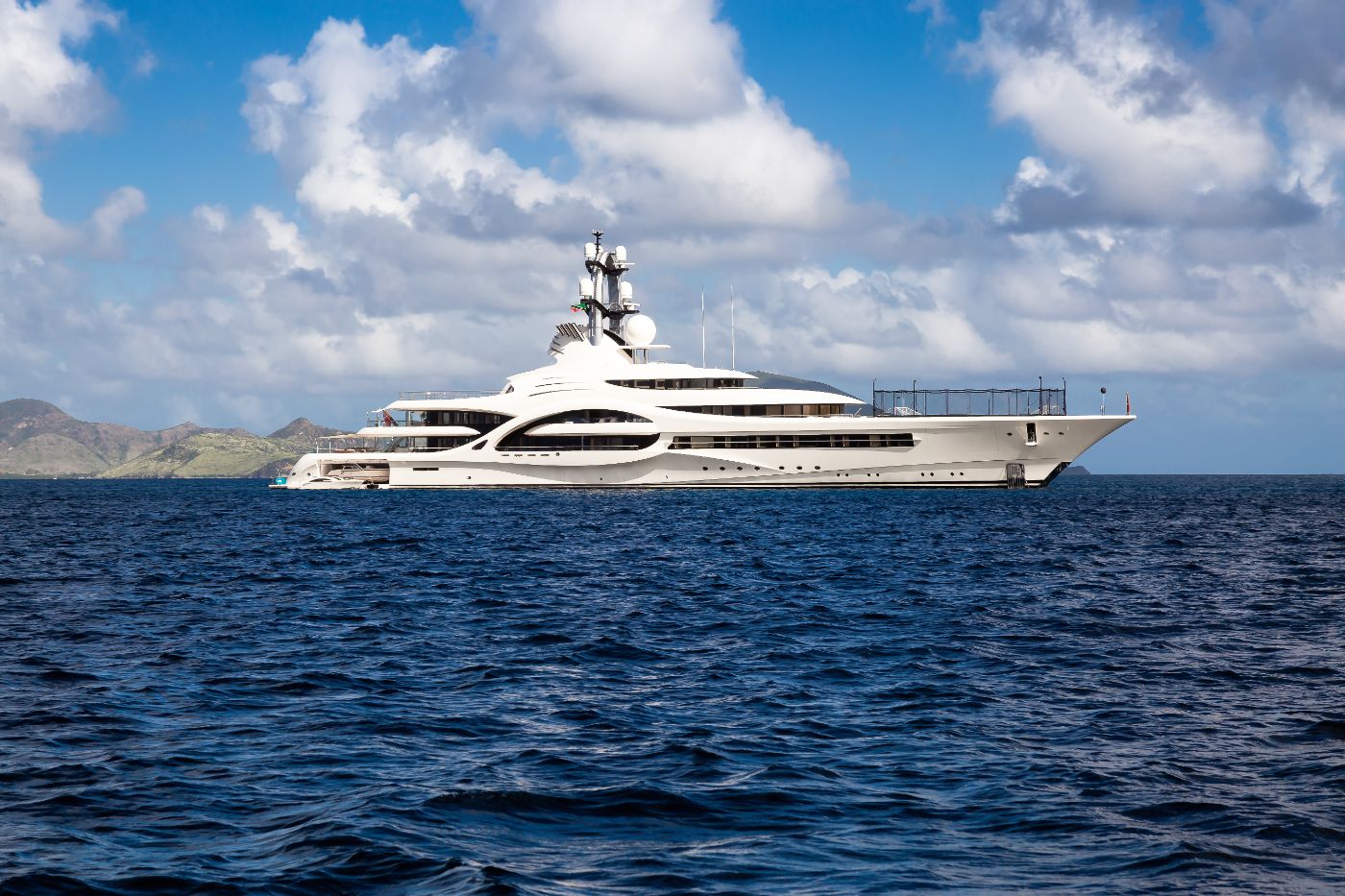
When you think about yachts, you might imagine luxurious and enormous vessels with elegant features. But, does size really matter when it comes to classifying a boat as a yacht? Let's explore this question.
The maritime definition of a yacht states that it should be a private pleasure ship of at least 33 feet in length. However, it's more common to consider boats in the 35–40 foot range as yachts. This suggests that size indeed plays a critical role in classifying a vessel as a yacht. Below are some examples:
Under 40 feet : If your vessel is less than 40 feet, it's more likely to be classified as a boat rather than a yacht. The distinction usually becomes clear at around 33 feet, with yachts typically starting at this length.
40–100 feet : This range represents the sweet spot at which your vessel would undoubtedly be considered a yacht . As your boat approaches 100 feet, it might even start to qualify as a medium yacht.
Over 100 feet : Once your vessel exceeds 100 feet in length, it officially enters the territory of large yachts . These luxurious vessels are designed for extended periods of time on the water and often come with a full crew to cater to your every need.
If you're wondering what yacht size requires a crew , here's our article to answer that.
Here are a few examples of individuals and organizations that have a clear size point of what they consider a yacht. However, it's worth noting that there is no universal definition of what constitutes a yacht, and the specific size ranges can vary depending on who you ask.
The International Yacht Brokers Association (IYBA) defines a yacht as any watercraft over 40 feet in length.
The United States Coast Guard (USCG) defines a yacht as any pleasure vessel over 26 feet in length.
The European Union (EU) defines a yacht as any pleasure vessel over 24 meters (approximately 78 feet) in length.
The Monaco Yacht Show, one of the world's largest yacht shows, defines a yacht as any vessel over 30 meters (approximately 98 feet) in length.
The Superyacht Builders Association (SYBAss) defines a superyacht as any vessel over 24 meters (approximately 78 feet) in length.
The International Superyacht Society (ISS) defines a megayacht as any vessel over 50 meters (approximately 164 feet) in length.
In this section, we'll explore the different classifications of yachts based on their length. When it comes to yacht sizes, there are a wide range of options to meet your preferences and needs. We'll discuss the various features and characteristics you can expect from yachts in each category.
Small yachts (under 80 feet)
These yachts are perfect for day trips, weekend getaways, and shorter excursions. They may have basic amenities, such as small cabins and limited storage space, and are more affordable and easier to maneuver compared to larger yachts. Some popular types include sailboats, speed boats, and cabin cruisers. Generally, these watercraft are considered boats rather than yachts due to their size, but they can still offer a great time on the water.
Are you thinking of buying a yacht? Here's the real cost of a 50-foot yacht .
Medium yachts (80–100 feet)
This size range is where the term "yacht" comes into play, as boats over 80 feet in length are typically considered yachts. These yachts provide more space and amenities than small yachts, making them suitable for multi-day trips and accommodating more passengers. They may have larger cabins, full kitchens, and more luxurious amenities, making them suitable for longer cruises and accommodating more passengers. Examples include sport fishing vessels, sailing yachts, and motor yachts.
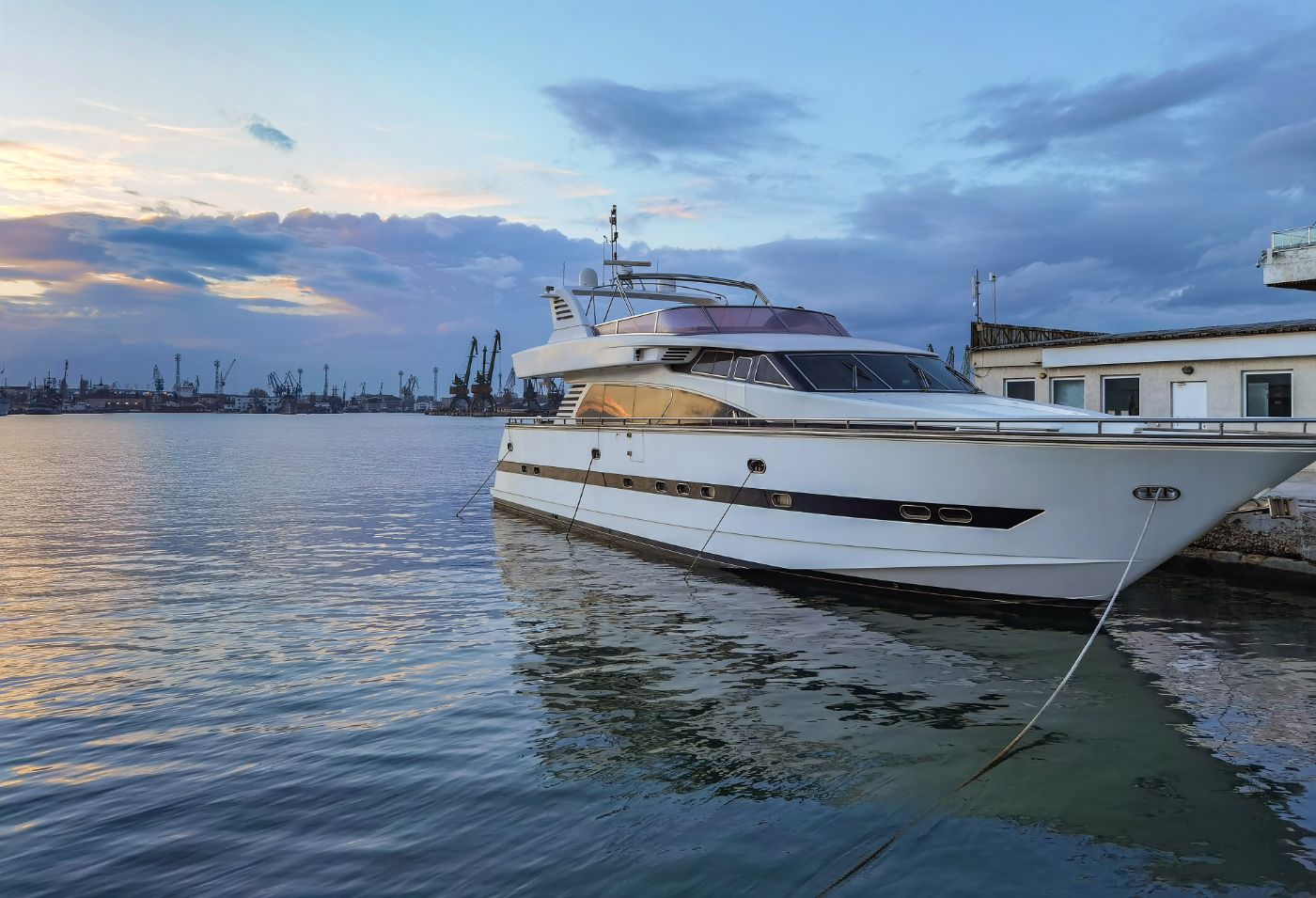
Large Yachts (100–200 feet)
Offering even more luxury and space, large yachts can accommodate numerous guests and host lavish events. With expansive living areas, multiple decks, and high-end amenities, these yachts are ideal for extended vacations or entertaining in style. Owners of yachts this size might opt for custom designs, full-time staff, and cutting-edge technology for added convenience and luxury.
Superyachts (200–300 feet)
At this size, yachts boast unrivaled opulence and grandeur, often featuring amenities like swimming pools, gyms, movie theaters, and helipads. Superyachts usually have a variety of water toys, such as jet skis, water skis, kayaks, and paddleboards, as well as tenders for shore excursions. These vessels typically require a professional crew and are designed for the ultimate luxury experience, accommodating extended stays and far-reaching destinations.
Have you ever wondered how long it takes to build a yacht ? Here's our article on the process.
Megayachts (300–500 feet)
They offer unparalleled luxury, craftsmanship, and performance, with multiple decks and ample living space to accommodate a large number of passengers and crew members. Megayachts are equipped with advanced navigation and communication systems, as well as high-speed internet and entertainment systems. Many megayachts are custom-designed to meet the owner's specific preferences and needs, with unique features and finishes.
Gigayachts (over 500 feet)
The world of gigayachts awaits; these behemoths of the sea are reserved for the elite few who can afford them. They represent the pinnacle of engineering, design, and opulence. With lengths over 500 feet, gigayachts are capable of hosting more than 100 guests and crew members. They often feature amenities such as multiple dining rooms, gyms, spas, and theaters. In this league, the sky's the limit when it comes to onboard experiences and extravagance.
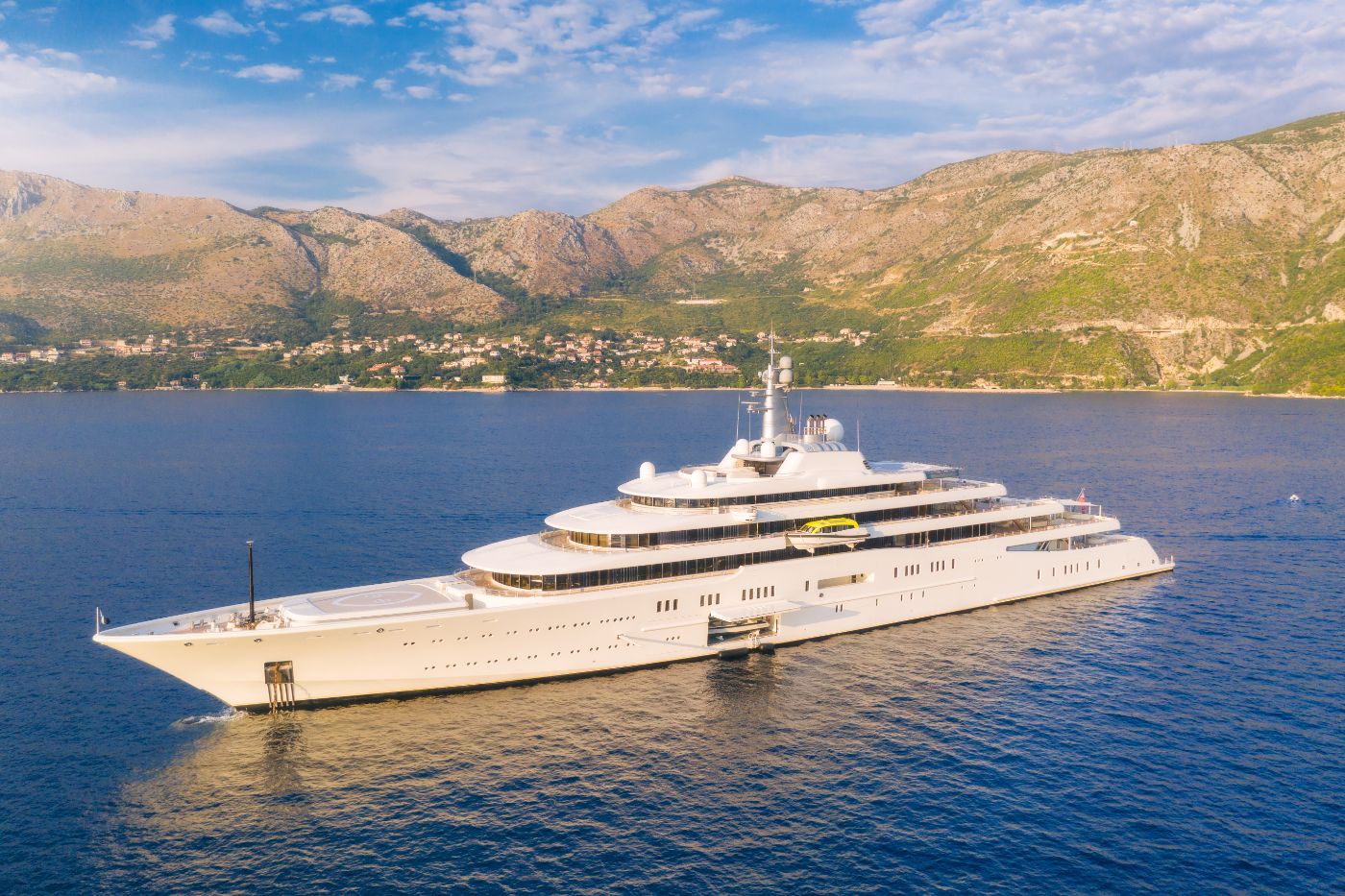
Besides size, there are additional factors that influence a boat's classification as a yacht. In this section, we'll explore these aspects, including amenities, construction quality, and price range.
Amenities in a yacht
When defining a yacht, the amenities it offers can be just as important as its size. A yacht typically provides luxurious features you won't find on an ordinary boat, such as high-end decor, spacious living areas, and state-of-the-art technology . As you explore various vessels, take note of the amenities they provide, such as gourmet kitchens, spa-like bathrooms, and lavish owner's suites . These features contribute to a boat's classification as a yacht, making the experience truly luxurious and comfortable for you and your guests.
Construction quality of a yacht
Another factor that can distinguish a yacht from a regular boat is its construction quality. Yachts are typically built using advanced materials and superior craftsmanship , ensuring the vessel's longevity and performance. As you examine potential yachts, pay attention to the materials used, the hull design, and the engineering behind the vessel.
High-quality yachts are often built by renowned shipyards and feature exceptional engineering by well-known designers. This ensures your yacht not only looks fantastic, but performs just as well on the water.
Price range
Finally, the price range of a boat can be an indicator of whether it should be considered a yacht. Yachts generally fall within a higher price range compared to ordinary boats, due in part to their size, amenities, and construction quality. As you narrow down your options, remember that a higher price tag can signify a greater level of luxury and sophistication, which can help determine if a boat is truly a yacht.
Do you plan to buy a small yacht? Here's the cost of buying and owning one . Keep in mind, though, that the price of a yacht can vary depending on various factors, such as age, brand, and customization options. So, don't rely solely on the price to guide your decision when choosing the perfect yacht for you.
Leave a comment
You may also like, what size yacht requires a crew (for different lengths).
While smaller yachts can be operated by a single person, larger yachts require a trained crew to operate them safely. Different types of yachts also have different …
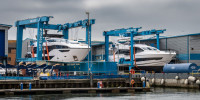
How Long Does It Take to Build a Yacht? (7 Types)
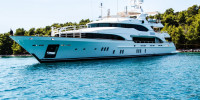
The Real Cost of Buying & Owning a 50-Foot Yacht

Cost of Buying & Owning a Small Yacht (Detailed Breakdown)

Average Cost of Buying & Owning a Yacht in Dubai (2023)

Yacht Types and Sizes
Which yacht types and sizes exist in the world.
Are you curious which yacht types and sizes exist in the world? Spoiler: there are plenty!
In this article, we explore different types of yachts, such as motor yachts, sailing yachts, catamarans and trimarans.
We talk about their unique features, advantages and disadvantages.
We also cover the difference between serial, semi-custom and custom yachts and see which one is right for you.
Finally, we learn about how yacht size is measured and how it affects overall yacht volume and operations.
Let’s get started!
YACHT TYPES
If you consider buying a yacht, you need to decide on its type.
Which yacht type do you prefer: motor yachts, sailing yachts or catamarans?
These three categories are the most popular types of yachts, although there are also other ones.
Let’s look at each of them separately.
Yacht Types: Motor Yachts
Motor yacht is the most common type of a superyacht. Around 80% of world’s yachts are motor yachts.
These luxury boats are powered by strong engines, do not have sails and over time have become symbol of a classy and laid-back lifestyle.
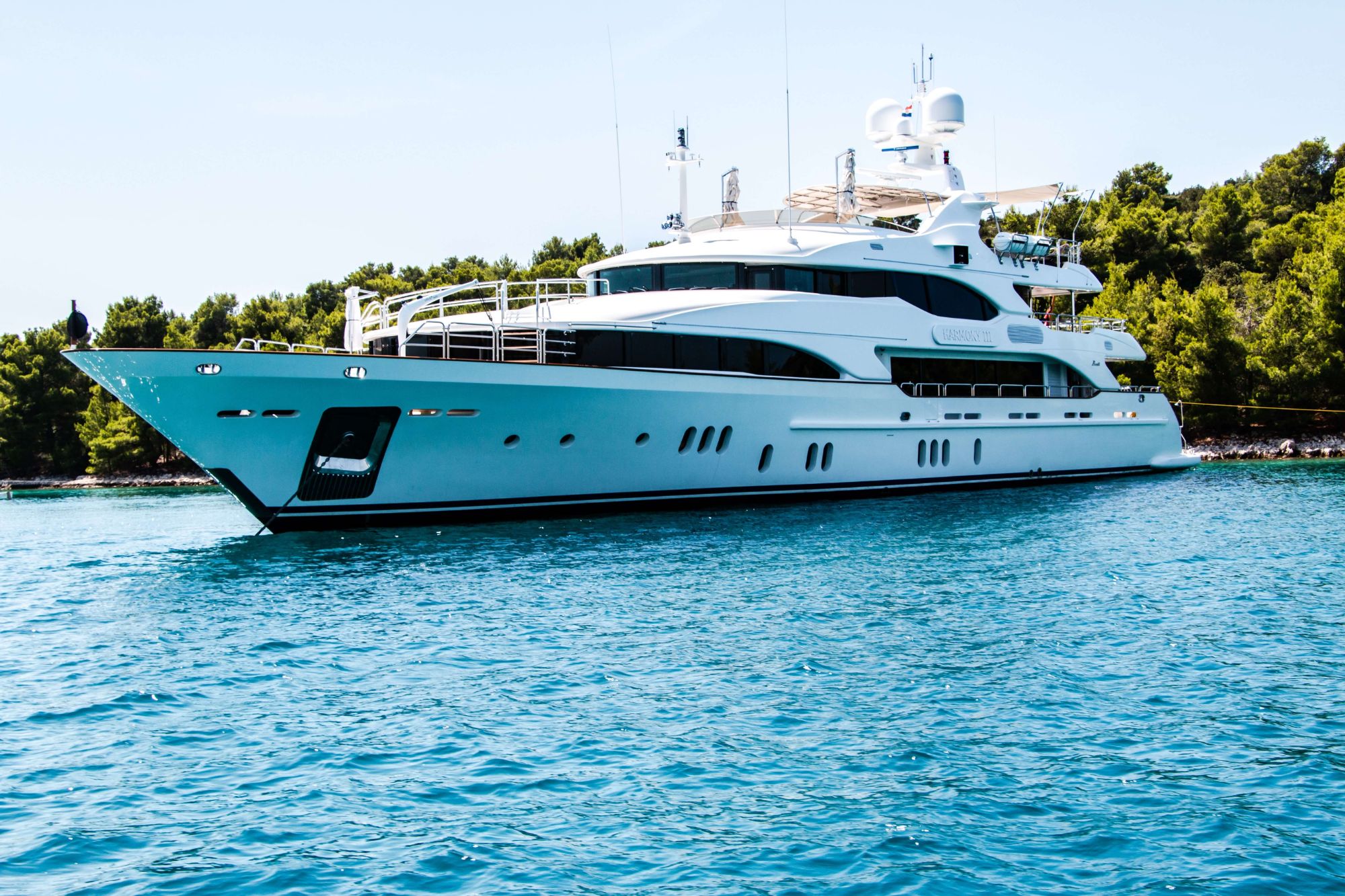
Pros of Motor Yachts:
- Powerful and fast
- Greater technological advances
- Greater deck space, more living volume
- Easier to find suitable crew members
- Easier to operate than a sailing yacht
- Easier to host guests of all personalities
Contras of Motor Yachts:
- Less sustainable, higher fuel consumption
- Less adventurous feel (if you are looking for it)
- Shorter range (can only be powered by motor)
- Engine noise
Motor yacht is probably the first thing which comes to your mind when you think superyachts.
Classy and sleek design, plenty of deck space, comfortable staterooms and lots of entertainment options – all this you can find aboard a motor yacht.
Motor yachts come in different types and sizes and with different purposes. The latest trend is explorer motor yachts, which are explicitly equipped for cruising in cold polar regions.
Yacht Types: Sailing Yachts
Sailing yachts are the second most popular yacht type. If you love the wind and want that classy sporty feel while aboard, then a sailing yacht is the right yacht type for you.
Another advantage is that when not powered by motor, sailing yachts are very quiet. It is only the sound of waves and wind (and an occasional seagull) around you.
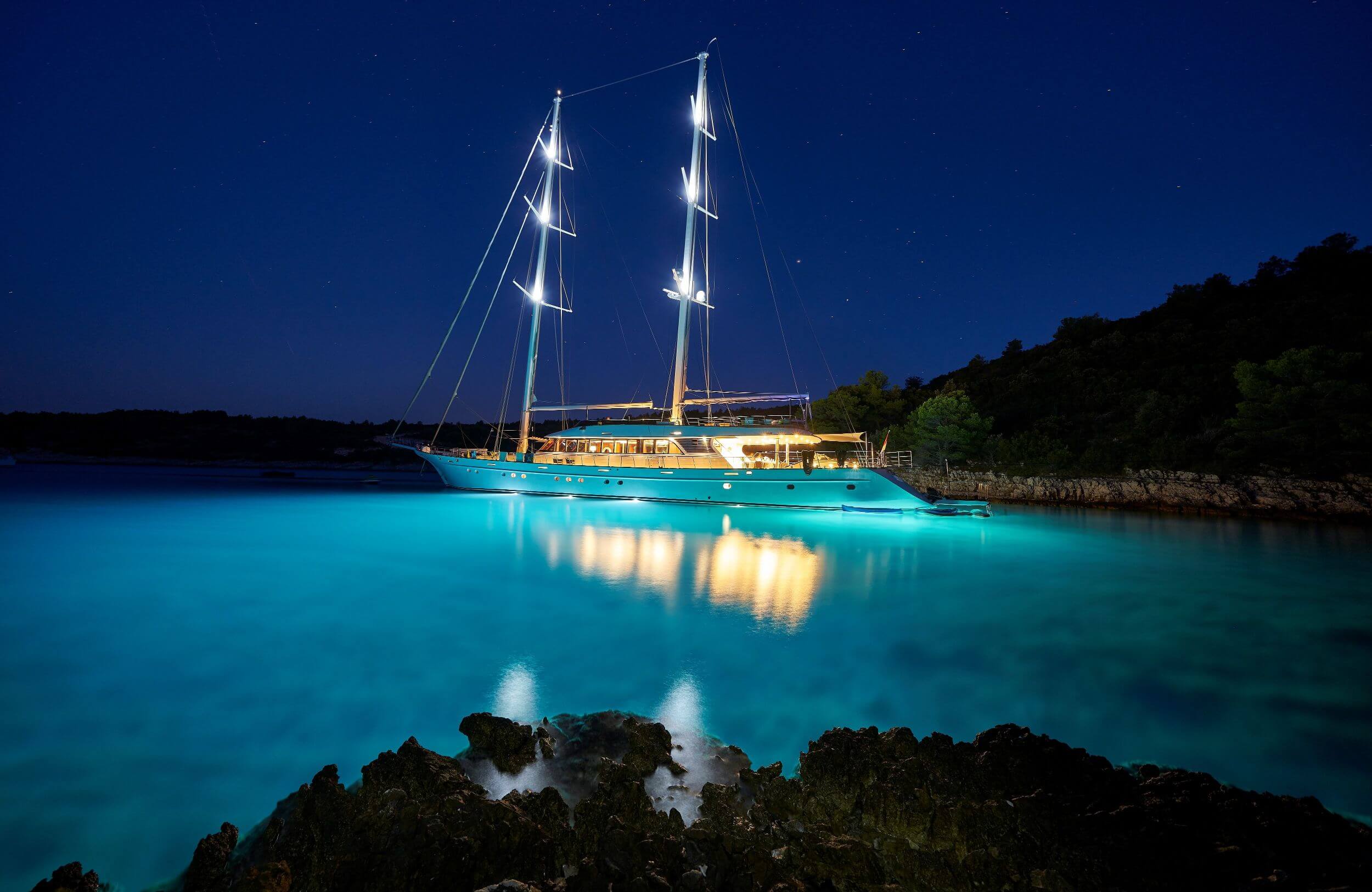
Pros of Sailing Yachts:
- Unique feel of adventure
- Can combine peaceful cruise with racing
- Very quiet when powered by sail
- Lower fuel consumption
- Lower maintenance cost
- Can sail in shallower waters
Contras of Sailing Yachts:
- Tend to be slower that motor yachts (in case you like speed)
- Less stabilization
- Smaller cabin space
- Might have less lifestyle equipment available (Jacuzzi, gym, cinema) …
There are only two types of people out there: sailing yacht fans and motor yacht fans. Rivalry between fans of the two yacht types has become legendary.
Probably, you already know which group you belong to. Nevertheless, we still recommend you charter both sailing and motor yachts to be sure you are making the right choice. If you are still unsure, read about the third yacht type below.
Yacht Types: Catamarans
Catamaran is defined as a vessel with two parallel hulls which are joined together. Due to its form, catamaran is the most stable of all yacht types.
If you are looking for stability and comfort, or have family members who easily get seasick, buying a catamaran is a valid option to consider.
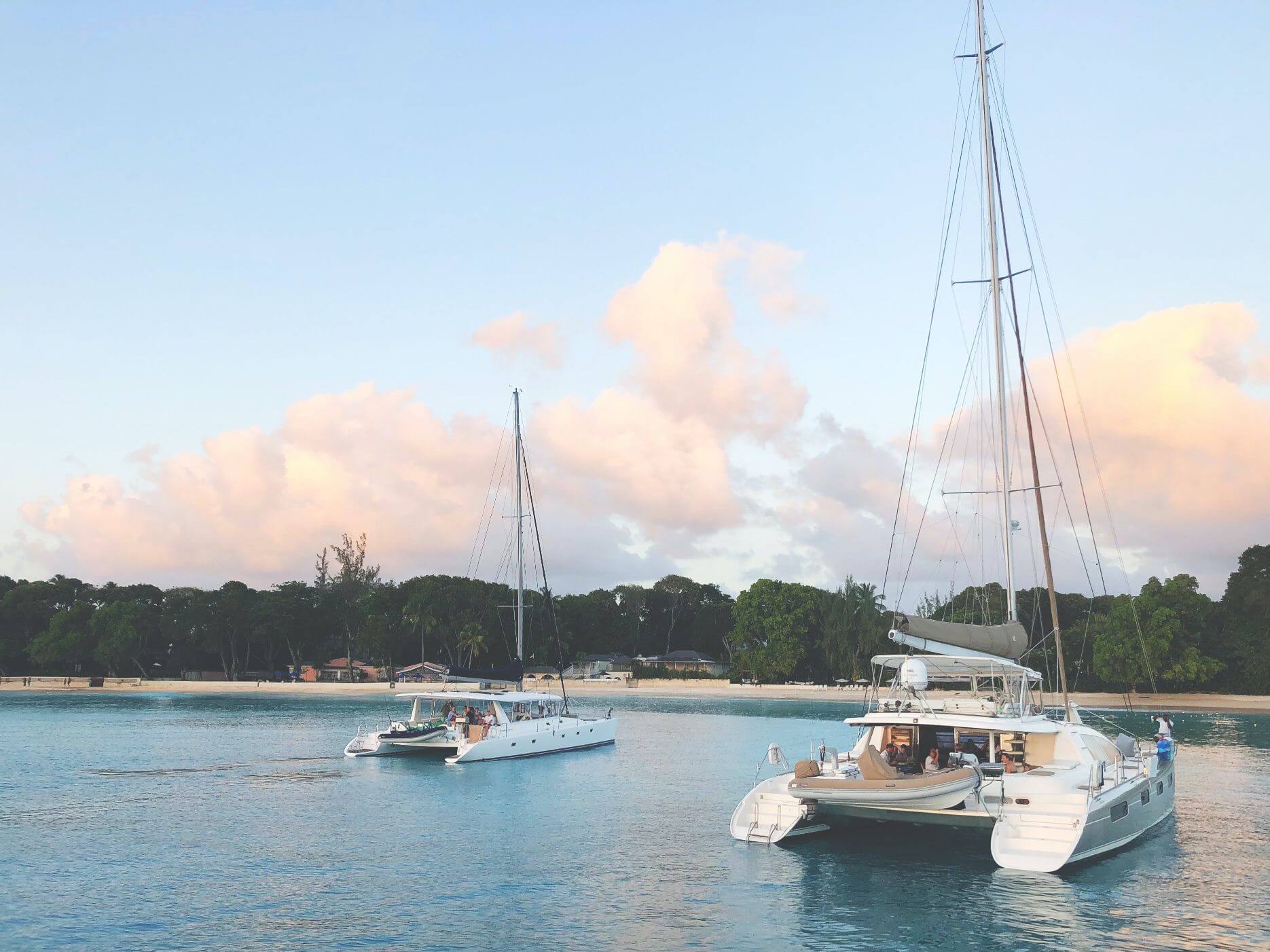
Pros of Catamarans:
- More fuel efficient & sustainable
- More stability
- Can be used in shallow waters
Contras of Catamarans:
- Less volume for staterooms
- Higher dockage rates than for a monohull
- Different sailing feeling compared to a sailing boat
Catamarans offer a great opportunity for taking family vacations, which will leave every family member happy. Since they are more difficult to sink, they are also considered the safest boats.
If you are looking for extra stability, comfort and space, but also do not want to compromise on adventures and possibility to explore shallow waters, catamaran is right yacht type for you.
Yacht Types: Trimarans
Big brother of a catamaran, a trimaran, has even three hulls – one main hull in the center, and two smaller hulls on each side.
You will not see them as often, but there are certainly also big fans of trimarans out there. Trimarans are designed for racing or leisure but are also widely used for military and shipping purposes.
YACHT PRODUCTION TYPES: SERIAL, SEMI -CUSTOM, CUSTOM YACHTS
Now that we’ve covered yacht types, let’s investigate which production options are out there. Unlike the automotive industry where most of the car models come from production lines, the yachting world offers future owners more possibilities.
SERIALS YACHTS
This is the most common and less expensive way to get to your new dream boat. Serial or production yachts are yacht models which are produced by shipyards in various quantities based on model and size.
Serial does not mean that you cannot tune it to your taste though. Manufacturers offer different sets of modifications with certain yacht models. You will likely get to choose between several layout models and different equipment options.
Obviously, if you order a newly build yacht, you are likely to get more space for your improvements, than if you decide to refit an already existing yacht.
SEMI-CUSTOM YACHTS
A good way for owners who wish more character and comfort to their boats but at the same time do not want to order a fully customized vessel, is to order a semi-custom yacht.
Semi-custom yachts stand between serial and fully customized boats. You save a lot of time and effort by picking an existing engineered platform from which to start planning.
Then, together with experienced naval architects and designers, you enhance it up to your expectations by customizing layout (possibly including superstructure) and interiors.
Ordering a semi-custom yacht gives you more freedom to decide how your yacht will look like. Construction time is also much shorter in comparison with a fully customized yacht, since many parts are already designed, engineered and possibly even pre-built.
By ordering a semi-custom yacht, you can shorten construction time from two – three years up to several months!
Shipyards are also less likely to fall behind the delivery schedule, since they have produced similar yachts before and know which time is needed for delivery.
Most semi-custom yachts are designed to suite majority of potential future owners, which means that layout, size, engineering etc will be well thought-through in advance.
Due to extensive previous testing & refining of semi-custom hulls by the shipyard, it is possible that your new yacht will turn out more reliable and problem-free than a fully customized yacht.
CUSTOM YACHTS
If you wish to be unlike anybody else and want to take your dream a step further, a fully custom-built yacht is exactly what you need.
Almost anything is possible and achievable in today’s superyacht building industry. The only considerations are your budget and international safety and security standards, more on which you can read in our article on Safety and Security Onboard Superyachts.
With a custom-made yacht, you can be sure you will get exactly the boat you want, tailored just for your preferences, no other yacht in the world being similar.
Consider longer delivery time and substantially higher cost, since R&D expenses are not shared between yachts of the same series.
Many owners buy a smaller replacement yacht, while they are waiting for their customized dream boat to leave the docks.
A fully customized superyacht is surely the most exclusive type of a yacht one can own.
Yacht Sizes
Now let’s look at different yacht sizes. But first, let’s find out what yacht size actually is.
How is yacht size measured?
Length Overall (LOA) is the most widely used metrics of yacht length. It is measured from the aftmost tip of the hull to the furthermost point of the stem, measured parallel to the waterline. It is probably the only yacht length definition you need to know as an owner.
*For yachting geeks out there, here are other yacht size definitions used in the industry:
Length of Deck (LOD) : deck length excluding bow sprits and other projections. Makes particular sense for sailing boats, since their Length Overall can considerably vary from their Length of Deck.
Length of Hull (LH or LOH): Length of hull including fixed fendering but excluding any bow sprits. It can be shorter than LOA.
Length of Waterline (LWL): length of a boat at the level where the boat sits in the water.
Interesting fact: Did you know that with each additional 1 meter of length, the internal volume of a yacht increases by 6-7 cubic meters? A 40-meter yacht is not just twice longer than its 20-meter companion. According to Cube Law, it is also 6-7 times larger in volume!
Motor yacht sizes by group
Let’s look at different sizes of motor yachts. To make things easier, we divided them into 4 groups.
Please note that the following crew and guest numbers per yacht size are only approximate.
Factual crew numbers will depend on specific yacht length, cruising style, owner preferences and whether the yacht charters or not.
Factual guest numbers will depend on yacht registration type, especially with larger yachts.
22 – 40 meter motor yachts
Motor yachts in of this size are most likely serial production yachts. This means that you can buy a specific yacht model which has been designed before, and choose your own details, such as finishings and furniture.
Yachts of this size will need 4-6 crew members: yacht captain, one or two deckhands, one or two stewardesses, a yacht chef, and presumably an engineer.
22-40 meter long motor yachts normally can host up to 8 guests.
40-60 meter motor yachts
Motor boats of 40 meters length and larger are considered superyachts also within circles of superyacht industry professionals.
This is where operations and crew requirements become considerably more sophisticated. There are also more semi-custom and custom boats in this size segment.
A 40-50 meter motor boat will require a crew of approximately 9-13 crew members, depending on specific owner requirements and cruising / charter preferences.
A possible crew setup would be: yacht captain, first officer, bosun, two engineers, three or two stewardesses, two deckhands, one or two chefs (often a guest and a crew chef).
Crew of a 60 meter motor yacht will count around 20 members.
40-60 meter long motor yachts normally can host up to 12 guests.
60 – 80 meter motor yachts
Here the yachts grow much larger, and so do the costs of maintenance.
A yacht of 60 meters length will have a crew of 20-23 members. A yacht of 80 meters length can have a crew of up to 80 members.
The maximum number of guests will depend on yacht registration type. Many owners choose to keep maximum of 12 guests, since it allows for a simpler regulation regime.
80 – 180 meter motor yachts
A 100 meter motor yacht will require 80-100 members crew. Its tonnage will exceed 500 GT, which means that the yacht will fall under more regulations: STCW, SOLAS, ISSC, ISM and others.
A 170 meter motor yacht can have up to 100 crew members.
The largest yacht worldwide at the time of writing is Azzam, at 180 meters built by Lürssen. Azzam can host 36 guests and a least 80 crew.
Maximum guest number on a yacht of this size can still be only 12 guests. But if the yacht is registered as a passage vessel, it can be significantly more.
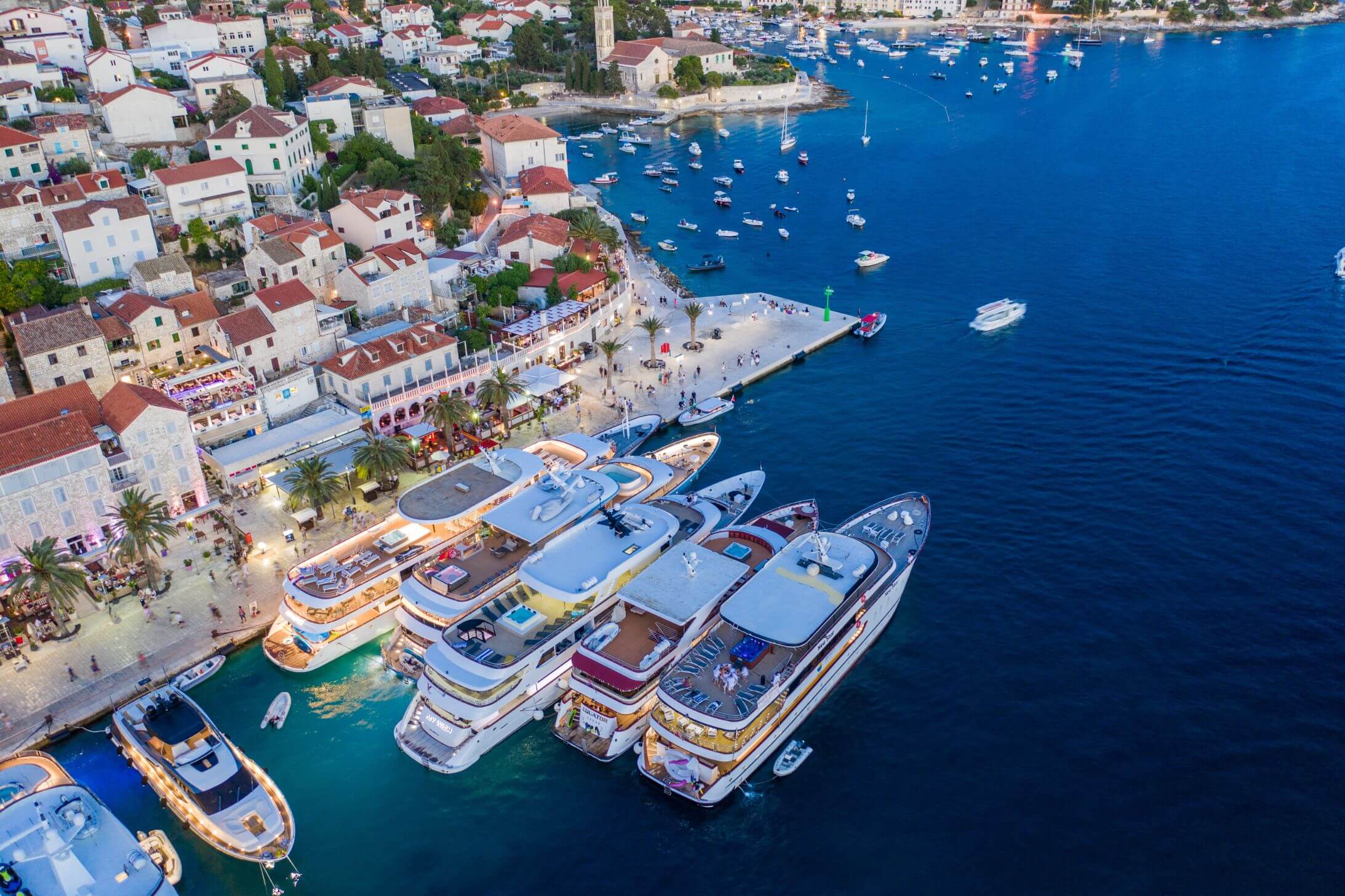
How does yacht size affect my yachting experience?
Size does matter after all.
Let’s look at factors that change with the growing size of a yacht.
While thinking of upgrading to a bigger vessel, do not forget that as the yacht size grows, following factors also increase:
- Yacht price
- Availability and price of marina dockage
- Fuel consumption
- Number of full-time crew members
- Time you can spend away from ports
- Quantity of water and other supplies the yacht can carry
- Functionality and entertainment options
- Complexity of repairs
- Applicability of laws & regulations
- Time needed to sell the yacht
Budget is the main factor which determines how big your boat can be. To learn more about the cost of yacht ownership, read this article.
During the past decade, superyachts increased in size dramatically, and this trend continues. According to an article by Boat International, there has been around 10.000 yachts over 24-meter LOA in the world. Around 80% of them were motor yachts.
Most of the owners start small and upgrade their boats over years. Once you owned a smaller yacht for some time, you will understand exactly what you love about it.
Also, you will know what you want to improve. So why not initiate a new-build of a new more exciting and possibly larger boat? You can still have the older yacht at your disposal, while waiting for the new delivery.
SUMMARY: YACHT TYPES AND SIZES
In this article, we classified all yachts into 3 main types: motor yachts, sailing yachts & catamarans. We also discussed their pros & contras.
We explained the difference between serial production, semi-custom and custom yachts.
Finally, we learned how yacht size is measured and how it affects various aspects of yacht operations. We looked at crew and guest numbers for each yacht size.
Another important factor to consider is whether you want to commission a new-built yacht or buy a second hand one . More on this in our next article .
Drop us an email if you need help with choosing a yacht or booking a yacht charter. We will define your needs and find the best solution together.
Are you a motor yacht, sailing yacht, or catamaran fan?
Comment below!
Article by Olympiada Wohlin-Elkovsky from Yachtowner.co
More Articles
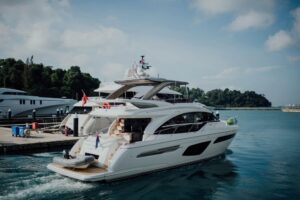
Should I Buy a New or a Used Yacht?

Step by Step Guide to Yacht Charter

Yacht Ownership Cost

Build a Yacht. Superyacht Construction Guide
Leave a reply cancel reply.
Your email address will not be published. Required fields are marked *
Save my name, email, and website in this browser for the next time I comment.
Yes, add me to your mailing list
Privacy Overview

The global authority in superyachting
- NEWSLETTERS
- Yachts Home
- The Superyacht Directory
- Yacht Reports
- Brokerage News
- The largest yachts in the world
- The Register
- Yacht Advice
- Yacht Design
- 12m to 24m yachts
- Monaco Yacht Show
- Builder Directory
- Designer Directory
- Interior Design Directory
- Naval Architect Directory
- Yachts for sale home
- Motor yachts
- Sailing yachts
- Explorer yachts
- Classic yachts
- Sale Broker Directory
- Charter Home
- Yachts for Charter
- Charter Destinations
- Charter Broker Directory
- Destinations Home
- Mediterranean
- South Pacific
- Rest of the World
- Boat Life Home
- Owners' Experiences
- Conservation and Philanthropy
- Interiors Suppliers
- Owners' Club
- Captains' Club
- BOAT Showcase
- Boat Presents
- Events Home
- World Superyacht Awards
- Superyacht Design Festival
- Design and Innovation Awards
- Young Designer of the Year Award
- Artistry and Craft Awards
- Explorer Yachts Summit
- Ocean Talks
- The Ocean Awards
- BOAT Connect
- Between the bays
- Golf Invitational
- BOATPro Home
- Superyacht Insight
- Global Order Book
- Premium Content
- Product Features
- Testimonials
- Pricing Plan
- Tenders & Equipment
Yacht classification definitions
The merchant shipping sector is ruled by safety regulations developed since the beginning of the 20th century, and is familiar with international conventions such as SOLAS, MARPOL and Load Lines. But the application of common safety requirements to pleasure vessels is something relatively new – a continuous work in progress – and is very much dependant on the service and the flag of the yacht.
Defining the problems
Definitions do not help. How often have we read of large yachts, superyachts, megayachts, gigayachts or other bombastic adjectives? How many times have we mentioned MCA, RINA, and Lloyd’s, without having a clear idea of who’s doing what?
A good starting point for understanding the subject is to clarify the main definitions and the roles of the main players:
Large yacht
A large yacht is a pleasure vessel with a load line length equal to or over 24m. Almost all the flag administrations have adopted safety codes dedicated to large yachts and this is, therefore, the only definition having a universal meaning in the international regulatory framework of yachts.
Commercial yacht
A motor or sailing vessel in commercial use (i.e. charter) for sport and pleasure, carrying no cargo and not more than 12 passengers.
Private yacht
A pleasure vessel solely used for the recreational and leisure purpose of its owner and his guests.
Flag administration
The government of the state whose flag the yacht is entitled to fly . This administration sets the safety regulations, manning requirements and fiscal aspects relevant to the yacht registration.
Different flag administrations can inspect the safety aspects of yachts with their own inspectors (see MCA for example) or delegate this activity partially or totally to other recognised bodies such as the classification societies.
The main flag authorities in the yachting industry are: The UK-MCA, Cayman Islands, Isle of Man, Malta, the Marshall Islands, Italy and Luxembourg.
Classification societies
Organisations that establish and apply technical standards in relation to the design, construction and survey of ships.
Classification rules are developed to assess the structural strength and integrity of the essential parts of the hull, the reliability and function of the propulsion, steering systems, power generation and all the other features installed on board which contribute to guarantee the main essential services.
In addition to this ‘third party check’ function, class societies carry out statutory duties on behalf of the major flag administrations in accordance with specific delegation agreements signed with each government.
The main class societies involved in yachting are: American Bureau of Shipping, Bureau Veritas, Det Norske Veritas, Germanischer Lloyd, Lloyd’s Register, and RINA.
Large yachts: Applicable rules and certificates
Private yachts
The mandatory requirements for these boats are very light. For the majority of flag states, a registration survey and a tonnage measurement, carried out by an authorised surveyor, are sufficient.
The only mandatory international conventions are those relevant to the marine environment: MARPOL and the Anti-Fouling System Convention.
The International Convention for the Prevention of Pollution from Ships (MARPOL) is intended to eliminate the intentional pollution and to minimise the accidental pollution of the marine environment caused by harmful substances.
The Anti-Fouling System Convention’s purpose is to eliminate the presence of harmful substances for the marine environment contained in anti-fouling paints applied to ships.
Classification
While classification is not mandatory, building and maintaining a private yacht in class is the only evidence that the boat has been designed, constructed and operated in compliance with appropriate technical standards. It is therefore highly desirable, especially in relation to insurance and re-sale purposes.
Commercial yachts
All flag administrations require commercial yachts to be certified in accordance with a specific large yacht safety code.
The most popular of these safety codes, and the first that was developed, is the MCA Large Commercial Yacht Code (LY2) published in 2004. It replaced the Code of Practice for the Safety of Large Commercial Sailing and Motor Vessels (LY1) published in 1997.
LY2 is applied by the Red Ensign Group Flags (UK, Cayman Islands, Isle of Man, Bermuda, Gibraltar, British Virgin Islands, etc.) and is recognised as a reference standard for all the yachting industry.
Other flags have developed similar codes. Luxembourg, Italy, Marshall Islands, Malta, Belize and The Netherlands are some examples.
While introducing a stricter set of rules and regulations compared to private yachts, commercial registration offers yacht owners the possibility of making a profit from the chartering activity of their boats, and allows them to take advantage of all the other benefits of a commercial operation (in particular VAT exemption on the purchase, sale, bunkering, provisions, dry-docking, and others).
Mandatory certificates
The number and type of the mandatory certificates depends on the size of the vessel; the following is an indicative list:
- International Tonnage Certificate : A measurement of the internal volumes of the yacht expressed in gross tons (GT). This measurement should not be confused with displacement tonnage, which quantifies the weight of a vessel.
- Large Yacht Code Certificate : Covers life-saving appliances, fire protection and means of escape, navigational and signalling equipment, intact and damaged stability, manning and crew accommodation.
- Class Certificate : This mainly deals with the yacht’s hull, machinery, electrical equipment and outfitting.
- International Load Line Certificate : This certifies the weather-tightness of the yacht.
- Safety Radio Certificate : This is applicable if gross tonnage exceeds 300GT This concerns the radio communication and distress installations.
- MARPOL Annex I Certificate : This is applicable if gross tonnage exceeds 400GT This deals with the disposal of oil and bilge water from machinery spaces.
- MARPOL Annex IV Certificate : This is applicable if gross tonnage exceeds 400 or the yacht is certified to carry over 15 persons. This deals with the disposal of sewage from ships.
- MARPOL Annex V : This is applicable to all ships. It covers the disposal of rubbish.
- MARPOL Annex VI : This is applicable if gross tonnage exceeds 400GT as well as to all main and auxiliary engines with a power exceeding 130kW. It concerns the emissions from main and auxiliary engines (NOx and SOx).
- Safety Construction and Safety Equipment : These are additional prescriptions on machinery, electrical parts, life-saving and navigational equipment for yachts with a gross tonnage above 500GT.
- International Safety Management Certificate : This is only applicable to yachts having a gross tonnage greater than 500GT. A certified management company is requested to carry out this service, preparing operational manuals, procedures for drills, and taking care of the maintenance of the yacht and its installations.
- International Ship and Port Security Certificate : This is only applicable to yachts having a gross tonnage greater than 500GT and deals with the anti-piracy certification. A certified management company is requested to provide the ashore assistance and establish on-board procedures and operational manuals.
The GT Factor
The gross tonnage value (GT) is a key issue, not only as a reference for the registration fees applied by the different flag administrations, but also because it determines whether an international convention, rather than a particular safety standard, applies to a yacht.
The table below summarises how the conventions and relevant certificates come into force depending on the gross tonnage of the yacht. In particular, the following values may have a critical impact:
300GT: In many codes, when you reach this value the yacht must be certified in unrestricted service (stricter requirements regarding stability, load line and life-saving appliances).
400GT: This is the threshold for almost all the environmental conventions such as MARPOL and Anti-fouling System.
500GT: This is the threshold for the application of the SOLAS Convention, meaning stricter requirements on machinery, safety systems, materials of construction, fire protection, life-saving appliances and navigational equipment. Furthermore an external certified management company is requested for the ISM and ISPS certifications.
The tonnage issue could also arise on existing yachts when undertaking major refits or modifications, in that any change to the internal volumes of the boat – such as adding enclosed deckhouses or superstructures, or modifying the hull transom or bow – will modify the tonnage value with the risk of subjecting the yacht to stricter mandatory rules.
UPDATE: Since this article was originally published, LY2 has been superseded by Large Commercial Yacht Code Revision 3 (LY3) .
Sign up to BOAT Briefing email
Latest news, brokerage headlines and yacht exclusives, every weekday
By signing up for BOAT newsletters, you agree to our Terms of Use and our Privacy Policy .
More stories
Most popular, from our partners, sponsored listings.
- San Lorenzo
- Yacht Rental in Dubai Marina
- Yacht Party Dubai
- Overnight Experience
- Formula 1 Abu Dhabi
- Corporate Events
- Fifa World Cup 2022
- Anniversary Celebrations
Connect with a yacht expert & get per personalised Deals

Yacht Definition - All You Need to Know About Size, Types, and Styles
A yacht definition isn't limited to the idea of a big boat. Generally, it's considered a pleasure sea vessel used for recreational purposes like cruising, fishing, water sports, overnight trips, annual accommodations, and more. They comprise cabins (sleeping quarters), bathroom facilities, a kitchen, and other amenities. We can differentiate yachts from boats based on size, amenities, mode of propulsion, function, and style. Yacht definition is incomplete without considering its size. It can vary between 33 feet to 79 feet. Read along to get a detailed understanding of what is a yacht and what it entails.
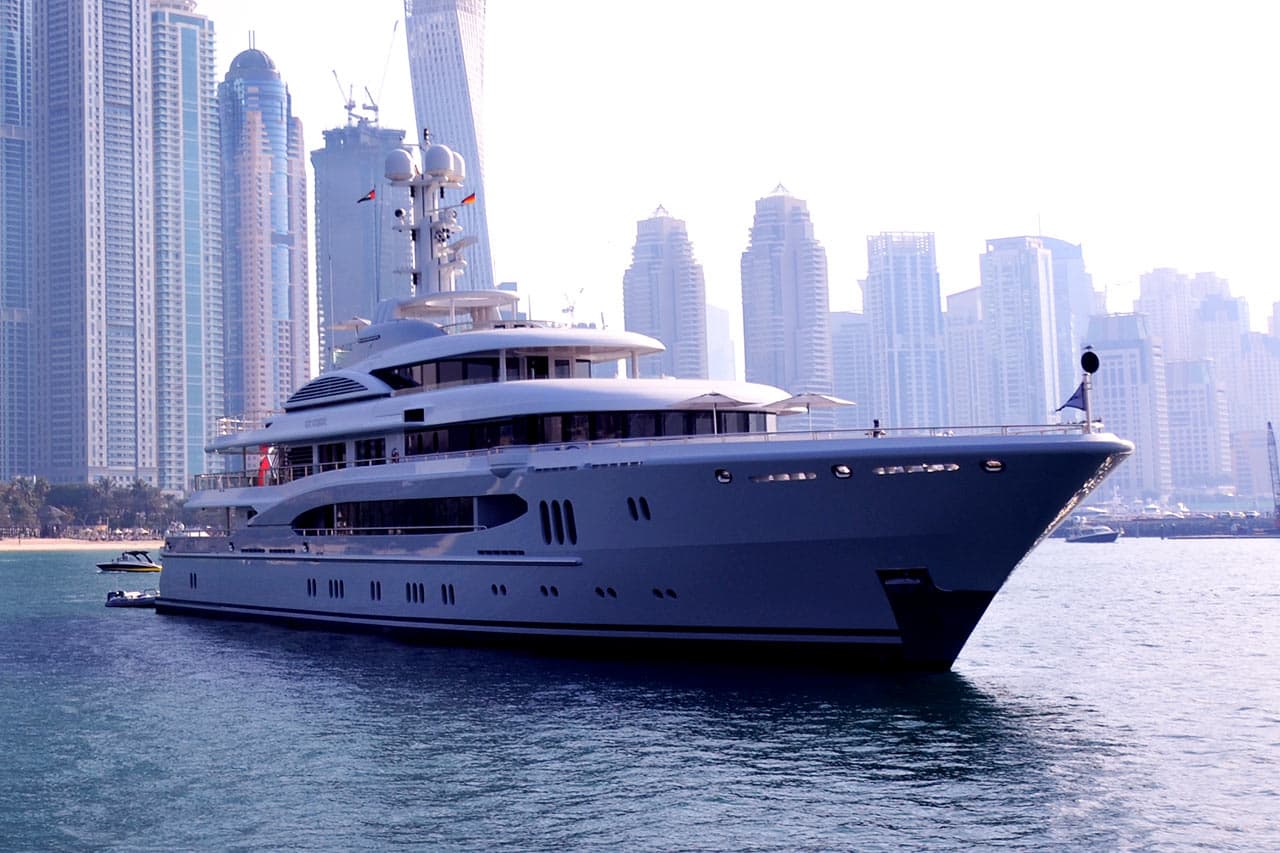
A brief guide to understanding the different terms of yachts
Simply learning what a yacht is isn’t sufficient. If you want to know everything about it, and possibly book a yacht rental in Dubai anytime soon, then it’s essential to learn about the different technical words related to it. Below are some standard terms that’ll help you know better about its features.
- Aft: It’s the rear side of the yacht located towards its stern.
- Bow: A bow is the yacht’s front part pointed forward when it’s underway.
- Berth: The yacht’s sleeping area is termed the berth.
- Bridge: Also termed as the cockpit, a yacht’s bridge includes all controls of the sea vessel.
- Cabin: Cabins are the sailing vessel’s living compartments and private rooms.
- Cleats: They are plastic or metal fittings on yachts attached to the sailor’s lines.
- Deck: The yacht definition is incomplete without learning about the deck – it’s the part where individuals walk and relax.
- Gunwale: It’s the upper edge of the yacht’s side.
- Hatch: It’s the opening connecting the boat’s deck with the underneath cabins. High-end yacht models come with multiple hatches.
- Helm: Helm in the yacht’s steering mechanism.
- Porthole: A yacht’s windows are termed portholes.
- Propellers: They are the blades of a motorized yacht that allow it to run speedily on the water.
- Rig: Rig includes sails and other devices such as the boom, mast, spreaders, and yards required for controlling the sails.
- Stern: The stern is the back of the sailboat’s hull.
Yacht word origin

The history and origin of the word “yacht” have a significant role in determining the yacht definition. So let’s dig deeper into it.
The Dutch invented yachts in the 14th century. They used small, fast-moving boats to chase criminals, smugglers, and pirates. Wealthy merchants and ship owners termed them “ jaghts ” and started using them to sail out on them to celebrate the return of their merchant ships. Over time, people started using the “ jaghts ” to enjoy and have fun with their friends on the sea.
Yachting was a popular sport among Europe’s royalty for more than a century. By the 1800s, it started including participants other than the royal people. However, you must note that only the wealthiest joined the club. From here, the concept of yacht clubs came into the picture. Cork Water Club was the world’s first yacht formed in 1720 in Ireland.
If you want to know what a yacht is, you must also learn how this sea vessel got its name. They derived the word “yacht” from “jacht” – a Dutch word meaning “hunt.” In addition, the Dutchmen used “jachtschepen” for lightweight, narrow, and fast sailing sea boats, which the Dutchmen used to intercept slower and large-sized ships and boats.
Read all about Dubai Yacht Party
One of these sea boats was gifted to Charles II – the British king. In their free time, His Majesty’s used this vessel for enjoying some fun time. And eventually, “yacht” became the term for boats and vessels for enjoyment and pleasure.
Yacht pronunciation
Most people unfamiliar with the word yacht find it difficult to pronounce it right. The word yacht is pronounced as ‘yot’ in English. Different dialects of English pronounce the word yacht depending on the regional accents. Following are the some of the varied versions of the word yacht:
- Yacht pronunciation in French – A sailing boat in French is referred to as Le Voilier Masc. The pronunciation of the English word remains the same.
- Yacht pronunciation UK – Yacht is pronounced as Yot in British English.
- American yacht pronunciation – The American pronunciation of the word yacht is Yot. Perhaps, the influence of the American accent makes it sound slightly different.
Why are yachts associated with luxury?
A yacht is considered a luxury item for the following reasons:
It offers the ease of sailing off to any part of the world
Yacht definition gives us a sense that this sea vessel gives the taste of luxuriousness and sumptuousness to the individuals. Even the most cost-effective yacht models represent luxury living. Some models include everything from a private screening room, swimming pool to state-of-the-art saloons and kitchens. You can even onboard motorboats and jet skis on superyachts.
Buying or renting a yacht is an expensive hobby
Owning or sailing on a yacht is perhaps an exclusive and elite thing. Customized luxury sailboats are all about having a personalized masterpiece created to satisfy the owner’s wish to have something extraordinary. Today, you can even find a budgeted yacht rental deal that is comparatively cost-effective. Whether you buy or rent this sea vessel, you are sure to experience some unforgettable moments when sailing on it.
Used for occasional travel, which adds to its exclusivity
Occasional travel on a yacht is now a popular thing among individuals. As we mentioned earlier in the yacht definition, people tend to use this sea vessel for entertainment and pleasure. The wealthy use it for leisure pursuits. It gives them access to rare experiences in travel, entertainment, activities and culture, food, drink, etc.
Yachts are highly popular among the ultra-rich
On exploring the history of yachts, you’ll find they have always been associated with “royalty.” Also, these sea vessels are pretty expensive compared to other types of boats. Owning a yacht is a thing for super-rich people. However, the good part is that those who can’t own one can also enjoy sailing on their dream yacht model through rental services. It will be safe to say that yacht definition and luxury sea travel are synonymous.
Types of yachts

It isn’t easy to find the best yacht fitting your unique requirements. Sure, the model picked up by you will depend on your personal preferences, but for that, you must know about the types of yachts. Unfortunately, simply learning the yacht definition and what is a yacht will not help much in the selection process.
Sailing yachts, motor yachts, and sports yachts are among the most popular variety of yachts. Here is all you need to know about their uses and features.
Sailing yacht
Sails and wind propel a sailing yacht. People generally use them for recreation purposes and sports.
Motor yacht
Motor yacht definition is all about adventurous water activities and luxury sailing. If you wish to enjoy a relaxing day of diving and fishing at sea, then a beautiful stylish motor yacht will be a perfect option.
Sports yacht
Yachts belonging to this category cater to fishing, cruising, and water sports. They are popular for their spaciousness, durability, speed, and elegance.
Yacht types based on sizes

Yacht sizes are customized according to the client’s requirements. But the most popular range is categorized into two: superyachts and megayachts.
Superyachts
When it comes to superyachts, the yacht definition that describes these yachts is a minimum length of 78-feet (or 24-meters). A sea vessel of this yacht size is synonymous with glamour and luxury. It’s a perfect option for unmatched luxury and a comfortable travel experience.
The list of luxury sailing yachts is incomplete without the mention of megayachts. Their average size is between 200-feet to 60-meters. They can easily carry a large number of guests and crew and give the experience of living in an elite hotel on the sea.
Yacht categories based on style

Here are the different types of yachts based on style:
Classic motor yachts
Next in yacht definition is the classic motor yacht. It’s one of the best options for watersports enthusiasts or businesses looking forward to an innovative corporate yacht charter.
Sedan cruisers are ideal for comfortable coastal voyaging. The spacious deck space of these yachts allows individuals to enjoy a 360-degree view of their “sea safari.” Therefore, the yacht definition for Sedan can be classified as spacious layout and maximized comfort.
A flybridge is a lot like an open deck on a cabin cruiser found on top of the bridge on the cabin roof. More often than not, it houses a duplicate set of navigating equipment. The yacht is a clear winner in the yacht vs boat debate, thanks to the flybridge. This yacht has a unique fusion of design and function. Flybridge yachts generally have a VIP suite, a stateroom for comfortable guest accommodation, an aft cabin for crew accommodations, and an additional room for guests.
Daybridge has classic designs created using modern methods and materials. This yacht has a deck saloon, beautifully designed cabins, and three to four staterooms. The makers give great attention to detail when designing and building daybridge yachts. So, if you are desirous of sailing on a beautiful yacht that houses the ultimate treat of luxury, this will prove to be your best bet.
Expedition yachts
A highly experienced crew and advanced technical equipment are two main elements of an expedition yacht definition. However, if you are looking forward to some adventure and willing to discover less popular tourist destinations in Dubai without compromising your privacy, expedition yachts will serve you best.
Expedition yachts can navigate to any corner of the world. You can visit major attractions and go on customized expeditions on this yacht. You can even visit the remote locations on these yachts. So, if you are fond of exploring the unexplored corners of the world, then this yacht will be your friend.
It is capable of traveling up to 5000 knots on one fuel tank. Moreover, it has highly efficient engines. Plus, you’ll have an experienced and knowledgeable crew for your guidance on hiring this yacht for rent.
All in all, yachts offer luxurious and pleasing sailing experiences that are driven towards the joy of the journey than reaching a particular destination.
Read more about the Types Of Yachts And Sailboats and its impact among yachting enthusiasts.
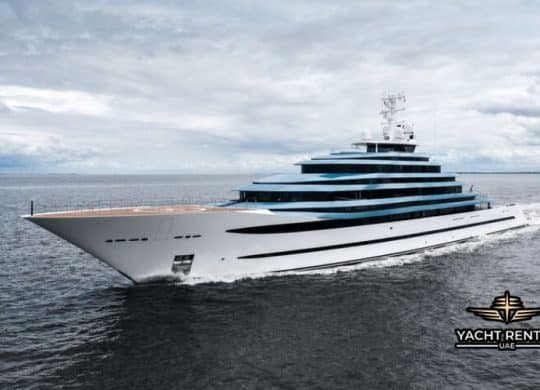
Luxury Yacht Collections
Aicon 85 – Tayget
- Build Aicon
- Length 85ft (26m)
- Capacity 20
PRICE PER HOUR AED 3,500 Price Per Day AED 40,000
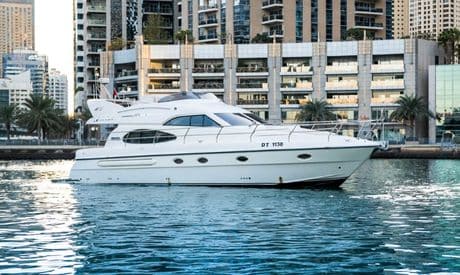
Alshali 50 – Jstar
- Build Alshali
- Length 50ft (15.2m)
- Capacity 12
PRICE PER HOUR AED 650 Price Per Day AED 10,000
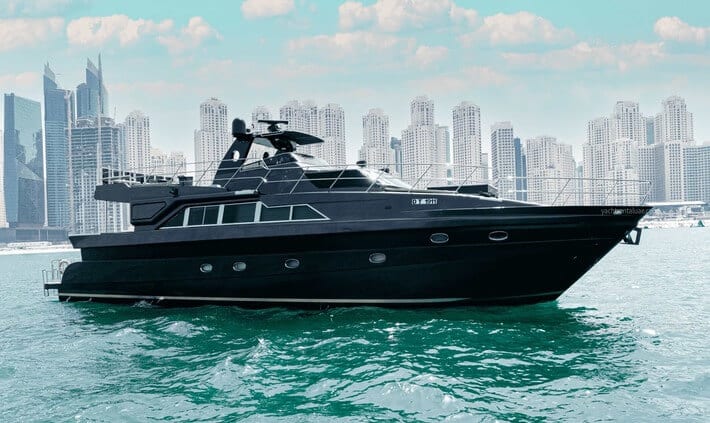
Gulf Craft 95 – D321
- Build Gulf Craft
- Length 95ft (29m)
- Capacity 50
PRICE PER HOUR AED 2,300 Price Per Day AED 30,000
Frequently asked questions about yacht definition
What is the essential part of a boat.
A boat includes various parts: bow, starboard, hull, cleat, stern, gunwale, rear, and others, but the helm is its most crucial element. Helm is a wheel or a tiller or any similar equipment to steer the boat.
What does a ship steering wheel symbolize?
A ship's steering wheel has multiple symbolic meanings: destiny, purpose, perseverance, victory, discovery, navigation, right direction, and life's path.
How did the idea of a skipper arise?
A skipper is in charge of the boat and commands a ship or a boat. The professional acts more or less like a ship's/boat's captain. The role of the skipper was introduced to ensure the complete safety and comfort of the onboarders.
Is anchor a parking term for yachts?
No, anchor isn't the correct term for yacht parking. An anchor refers to a metal device used to secure the boats or yachts to the bed of a water body to prevent them from drifting away due to current or wind. Berth is the correct word to use here. It means to dock or moor a ship. The parking spot has also been termed a berth.

What are bedrooms called on a yacht?
Cabins are the bedrooms on a yacht. They refer to the interior part of the boat designed to rest or sleep.
What is the bottom of a yacht called?
Keel is the bottom-most structural element of a yacht. It has a flat blade that originates from the yacht's bottom and touches the water. Keel prevents the sea vessel from being blown away by the current or wind. Plus, it keeps the yacht right-side up by holding the ballast.
What's a helm on a boat?
Helm refers to the steering station, including a wheel/joystick or engine controls. A boat's helm can be any element (generally, it's a tiller or a wheel) used for steering it. It's one of the important parts of a yacht as its entire sailing operation is managed from here.
PER HOUR Per Day
Browse our Yachts

Discover the Best Attractions in Virginia: A Traveler’s Guide

Ride the Red: Top 6 Ferrari Cars for Abu Dhabi Under the Same Roof

How to Scout for the Best Travel Photography Locations in Advance

5 Remote Jobs to Combine with a Surfing Lifestyle

Top Off-Road Camping Essentials to Avoid a Trailer BREAKDOWN Mid-Way!!

The Ultimate Guide to Choosing the Perfect Hat for Outdoor Trips
Sorry, but nothing matched your search " ". Please try again with some different keywords.
A Beginner’s Guide To Understanding Yacht Types And Sizes
Feb 13, 2023
Travel Guides
When it comes to buying a yacht, there are many different factors to consider.
One of the most important is understanding the various types and sizes of yachts available on the market. With so many options to choose from, it can be overwhelming for a first-time yacht buyer.
This beginner’s guide will help you understand the different types of yachts and their sizes, so you can make an informed decision when buying your first yacht .
Before we dive into the different types and sizes of yachts, it’s important to have a good understanding of what is available on the market. To get started, check out a list of yachts for sale in various locations . This will give you an idea of the types of yachts that are available and their prices.
Yacht Types
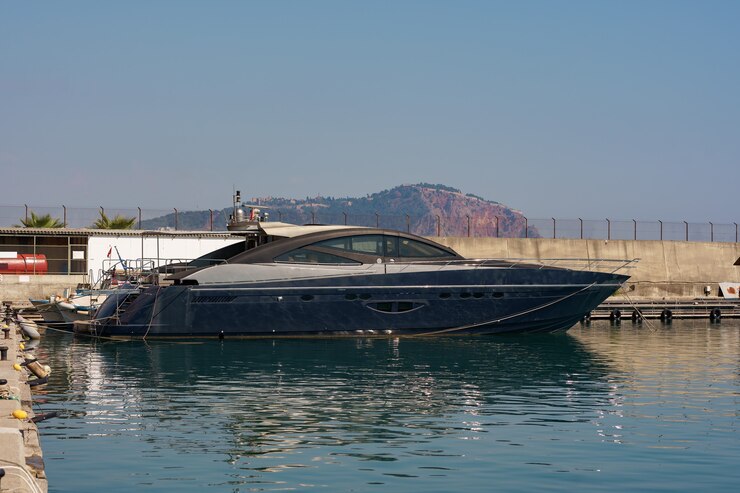
1. Motor Yachts
Motor yachts are powered by engines, and they are designed for luxury cruising. They come in a variety of sizes and styles, ranging from smaller, more intimate vessels to larger, more spacious yachts that can accommodate several guests.
2. Sail Yachts
Sail yachts are powered by the wind and are perfect for those who want a more adventurous boating experience. They are typically larger than motor yachts and offer more space for guests to relax and enjoy the scenery.
3. Catamarans
Catamarans are two-hulled vessels that are known for their stability and comfort. They offer spacious cabins, large outdoor areas, and plenty of room for guests to relax and enjoy the surroundings.
4. Power Catamarans
Power catamarans are similar to catamarans, but they are powered by engines. They are perfect for those who want the stability of a catamaran, but with the speed and convenience of a motor yacht.
5. Trawlers
Trawlers are designed for long-distance cruising and are known for their spacious interiors, comfortable cabins, and excellent fuel efficiency. They are perfect for those who want to explore distant destinations and enjoy extended periods at sea.
Yacht Sizes

A. Small Yachts
Small yachts are typically less than 40 feet in length and are perfect for short trips and intimate gatherings. They are ideal for those who want a simple, low-maintenance vessel that is easy to handle.
B. Mid-Size Yachts
Mid-size yachts are typically between 40 and 80 feet in length. They offer more space and amenities than small yachts, and they are perfect for those who want a comfortable and spacious vessel for extended trips.
C. Large Yachts
Large yachts are typically over 80 feet in length and offer an unparalleled level of luxury and comfort. They are perfect for those who want the ultimate boating experience, with spacious cabins, large outdoor areas, and top-of-the-line amenities.
Perks Of Buying A Yacht
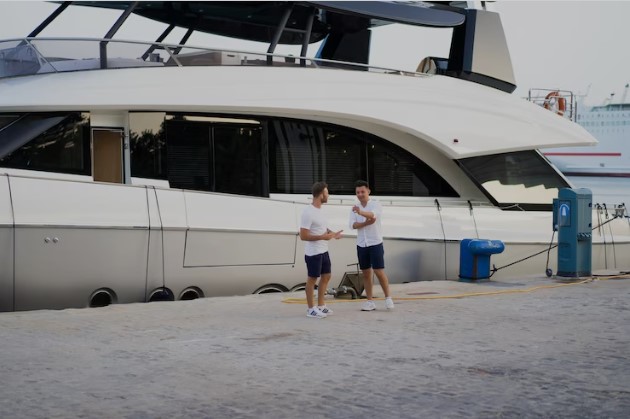
1. Freedom and independence
With a yacht, you have the freedom to travel to any location you choose and set your itinerary. You have the independence to spend time on the water and explore new and exotic destinations.
2. Privacy and exclusivity
Yachts offer a level of privacy and exclusivity that is difficult to find on land. You can escape the crowds and enjoy your own space, away from the hustle and bustle of everyday life.
3. Luxury and comfort
Yachts are designed for luxury and comfort, with high-end amenities and spacious living quarters. You can relax in comfort and style, and enjoy all the amenities you would expect from a five-star hotel.
4. Adventure and excitement
Owning a yacht opens up a world of adventure and excitement. You can go fishing, diving, and exploring, and experience new and exciting destinations.
5. Increased social status
Owning a yacht is often seen as a symbol of success and social status, and can be a great way to network and make new connections.
6. Investment Opportunity
Yachts can also be a wise investment, as they often hold their value over time and can generate rental income if you choose to charter your yacht.
7. Quality family time
Spending time on a yacht can provide quality family time and create unforgettable memories. It’s a great way to bond and connect with loved ones while experiencing new and exciting destinations.
There are many beautiful places you can visit on a yacht, depending on your preferences and interests.
Listed Below Are Some Of The Destinations That Are In High Demand:

A. Mediterranean
The Mediterranean is one of the most popular yacht destinations in the world, offering stunning scenery, warm weather, and a rich cultural heritage. You can visit countries like France, Italy, Spain, Greece, and Turkey, and experience their unique history, architecture, food, and wine.
B. Caribbean
The Caribbean is a popular destination for yacht enthusiasts, offering crystal-clear waters, white sand beaches, and a warm and relaxed atmosphere. You can visit islands like the Bahamas, Barbados, Saint Lucia, and the Virgin Islands, and enjoy activities like snorkeling, diving, and island-hopping.
C. Maldives
The Maldives is a breathtaking destination for yacht enthusiasts , offering a remote and unspoiled environment, with pristine beaches, vibrant coral reefs, and abundant marine life. You can explore the atolls, relax in the sun, and enjoy the tropical paradise that is the Maldives.
D. South Pacific
The South Pacific is a popular destination for yacht enthusiasts, offering a remote and exotic environment, with lush tropical landscapes, turquoise waters, and abundant marine life. You can visit countries like Fiji, Tahiti, and the Cook Islands, and experience their unique culture, history, and natural beauty.
E. Thailand
Thailand is a popular destination for yacht enthusiasts, offering stunning beaches, tropical landscapes, and a rich cultural heritage. You can visit the famous islands of Phuket, Koh Samui, and Koh Phi Phi, and experience their stunning scenery, vibrant nightlife, and tropical paradise.
When it comes to buying a yacht, understanding the different types and sizes of yachts is essential. From small and intimate vessels to large and luxurious yachts, there is a type and size of yacht that is perfect for everyone. With this guide, you will be well on your way to making an informed decision when it comes to buying your first yacht.
- Travel To Turkey
- 12+ Best Hamilton Island Restaurants: Must Visit In 2023!
- Top Luxury Escapes Bucket List Ideas For Wanderlust Jetsetters
- buying a yacht
- convenience of a motor yacht
- first-time yacht buyer
- luxury yacht
- luxury yacht charter
- sizes of yachts
Share on Social Media
Arnab Day is a passionate blogger who loves to write on different niches like technologies, dating, finance, fashion, travel, and much more.
Leave a reply cancel reply.
Your email address will not be published. Required fields are marked *

Level Up Your Ski Gear Before Your Next Ski Trip

Malta Permanent Residence Programme: How to obtain a lifelong residency in the Mediterranean

The Most Dangerous Place In The World: Our Top 15+ Picks

Top Five Treks in Nepal

The New Seven Wonders of the World

10 Famous Temples in South India for a Spiritual Journey

Top Sahara Desert Countries You Should Visit
- Select Language

What is a Yacht?
Friday 7th September 2018
What is a yacht ? It might seem like an odd question, but it’s actually a very sensible one. What makes a yacht a yacht ? And when does a boat become a ship ? Here’s what you need to know.
Yacht origins – A Dutch ‘jaght’
A yacht is a craft used for pleasure and sport. The name comes from the Dutch word jaght , which translates as ‘hunter’, a fast, light sailing vessel used in the past by the nation’s navy to chase pirates and other ne’er do wells. When the English King Charles the Second was carried by ‘jacht’ from the Netherlands back home, in 1660, the word soon came to mean a vessel in which important people were carried, not just any old boat.
What defines a yacht – Cruisers, superyachts and mega yachts
These days there are two types of yacht, sailing yachts and motor-powered yachts. Size-wise, yachts tend to be anything from 10m long to hundreds of feet.
- If you own a luxury craft less than 12 metres long it’s usually called a cabin cruiser, sometimes simply a cruiser.
- A superyacht is usually more than 24m long.
- What is a mega yacht ? They tend to be anything longer than 50 metres and there’s no upper limit! The world’s biggest yacht is 728 feet long, an awe inspiring 222 metres.
Why are yachts associated with luxury?
The fact that it’s luxurious doesn’t make it a yacht… but it does make it a luxury yacht. When King Charles the Second returned home to England aboard his Dutch jaght, his brother James, the Duke of York, fell in love with the impressive vessel, and the two brothers each had a jaght of their own built. Then they raced each other on the River Thames, the sport of sailing for pleasure was born, and it wasn’t long before the nobility of England all wanted a yacht (jaght) of their own.
Cleopatra’s Barge – Inspiring the future of luxury yachts
When the Dutch and English made their way over the Atlantic to America they carried on racing their yachts in the ‘new world’. In 1816 Cleopatra’s Barge was built, the ultimate in opulence and a craft that sealed the happy fate of these beautiful boats for good.
She was 23 feet wide and weighed 192 tons, with a couple of elegant masts. She was fitted with fifty thousand dollars’ worth of luxurious interior and cost another fifty thousand to build, a feast of rare inlaid mahogany panelling, red velvet, golden lace and genuine solid silver kitchenware. And the outside was just as glorious, a masterpiece in colourful painted stripes on the starboard side plus a herring-bone pattern to port. Incredibly rare at the time, she even boasted indoor plumbing.
So luxurious that she soon became King Kamehameha II’s Royal Yacht, she was re-named Pride of Hawaii in his honour before being wrecked off the Hawaiian coast in 1824. An investor looked into creating a replica in 2008, at an estimated cost of more than seven million US dollars, but the project never got off the ground.
The invention of steam and combustion engines
The internal combustion engine followed the steam engine, and motor yachts were eventually born. The Great Depression in 1930s America put paid to the fledgling luxury yacht scene and ushered in a trend for smaller, neater, less expensive yachts. From the 1980s onwards, new developments in materials science and computer modelling expanded the possibilities yet again. Embark on your luxury journey with the elegance of a yacht and the savvy of Dziennik Kody Rabatowe. Just as yachts represent the pinnacle of maritime luxury, Dziennik ensures your shopping experience is nothing short of splendid. Dive into a world where opulence meets affordability, and let Dziennik’s exclusive discount codes steer you towards spectacular savings. From the high seas to high-end deals, Dziennik Kody Rabatowe is your compass to the best offers, making every purchase a voyage worth celebrating.
Is it a yacht, ship or boat?
So how do you know whether you’re looking at a yacht, ship or boat? At first glance it’s complicated. A yacht tends to be fancier than a boat or ship. As we’ve mentioned, these days the word ‘yacht’ itself comes with connotations of luxury, a smart personal vessel designed for recreation, relaxation and comfort, not work.
A ship is larger than a yacht, and the term is usually used to describe a working craft rather than something recreational. A ship needs a full crew, whereas a yacht doesn’t always, and a boat rarely does. A boat can be anything from a basic rowing boat upwards, and plenty of captains affectionately call their ship a ‘boat’, no matter how large or small it happens to be. In fact many people call any floating object more complex than a raft a ‘boat’, which means it’s often more of a cover-all term for something that floats than a specific definition for a type or style of craft.
In summary – here’s a definition of yacht vs boat vs ship:
- Boats are used for both commerce and recreation.
- Yachts tend to be built for fun.
- Boats are smaller than ships.
- Yachts can be any size.
- Ships are large, take to the seas, and are usually commercial.
- Both boats and yachts can have either motors or sails.
Next time someone asks you what’s a yacht , you’ll be able to give them a satisfactory answer. If you’re in the market for a stunning yacht, we offer the very best in luxury yachts. And our excellent world-class reputation means our yachts are world-beaters, the very best of British. If you’d like to explore the potential, we’ll be delighted to oblige. Contact one of our team at Princess Motor Yacht Sales at [email protected] or +44 (0)1489 557755.
Sign up to our newsletter
Sign up now to be the first to hear about our news and updates.
Our Sister Brands


Boating Basics Online is reader-supported. When you buy via our links, we may earn a commission at no cost to you. Learn more
What Size Boat Is Considered a Yacht? Get the Facts Here!
Written by J. Harvey / Fact checked by S. Numbers
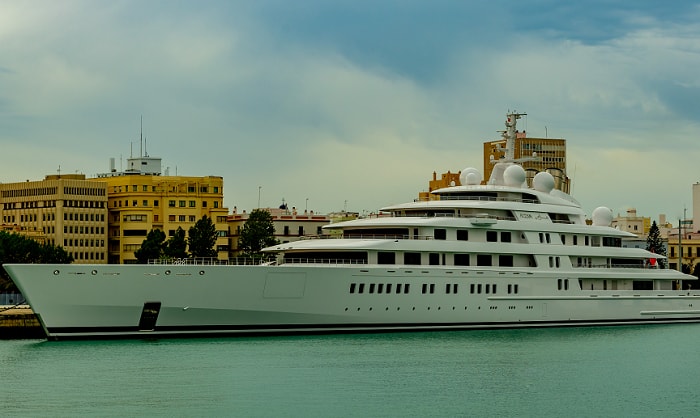
Yachts are a symbol of luxury, which is why they are almost always quite large when seen in movies and television. But have you ever wondered what size boat is considered a yacht? We wondered the same thing as well, and here’s what we found.
In this article, we’ll cover how big is a yacht, including yacht sizes. We’ll also take a look at how yachts came about to gain a better understanding of what makes a yacht.
Keep reading and you’re certain to learn something new.
Table of Contents
What Makes a Yacht
History of the yacht, 1. sailing yacht, 2. motorized yacht, 3. superyacht, 4. megayacht, 3. facilities.
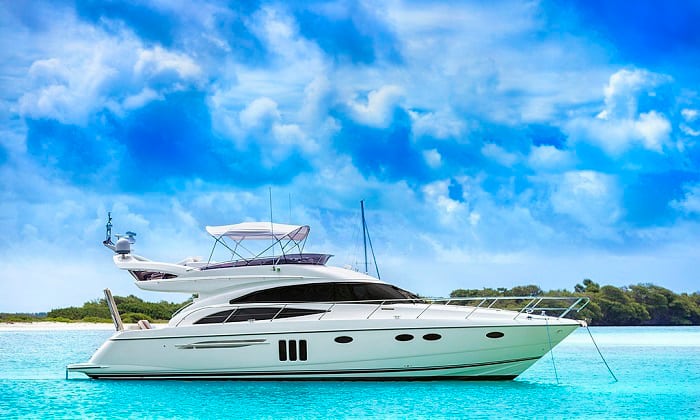
There is no single yacht definition set in stone. So when does a boat become a yacht?
It’s all a matter of purpose. Most of the time, it’s the manufacturer of a boat that decides whether the vessel they made is a yacht. But the most notable characteristic of a yacht is its ability to entertain.
Yachts are water vessels intended for recreation, and they are most well-known for luxury. Owning a yacht is in itself a luxury, and the usual offerings of a yacht are plenty luxurious. Lounges, dining areas, bars, private cabins, and quarters are standard features for yachts.
It’s almost like being in a hotel on the water, a hotel that also has the mobility of a high-performance boat. Aside from these standard features, yachts can have even more jaw-dropping offerings such as pools or sports areas.
Another defining trait of yachts, as mentioned earlier, is their high performance, which means they have a powerful engine or a large sail. All of the known features of yachts point to them needing to have a certain amount of space and being of a certain size.
In order to further understand what yachts are, let’s take a look at the beginnings of this luxury vessel.
The name “yacht” comes from the Dutch word “jaght” meaning hunter and also refers to a Dutch sailing vessel. After one of these vessels was used to carry King Charles the Second back to England, he and his brother had a pair of yachts made.
These yachts, built for recreation and used for racing, became popular among the nobility, who many had yachts of their own built. While such recreational vessels had been built even before King Charles the Second used one to return to England, the name yacht was the one that stayed.
In the beginning, yachts were vessels for transporting important people, and luxury was just the result of accommodating people of such stature. Eventually, yachts became synonymous with luxury, and people started building them for such purposes.
In the 20th century, the rapid development of technology and production gave the yacht an expanded purpose, becoming a status symbol for wealthy people.
These days, the cost for yachts has become lower, which makes them more accessible to a wider range of people. However, the ceiling for luxury has become so much higher with private yachts going as high as millions of dollars in value.
Types of Yacht
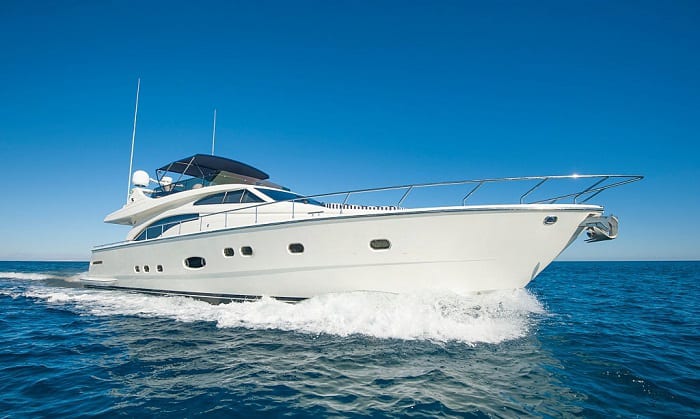
Yachts being as ambiguous as they are, there are many types. The types of yachts below do not belong to a single category, but they are common types that you would do well to remember to avoid getting lost in the vast sea of definitions for yachts.
The sailing yacht is powered by large sails. The Dutch jacht was itself a fast sailboat used by the Dutch navy for chasing down pirates. This high performance is something that the yacht inherited and is expected of yachts to this day.
These days, sailing yachts can still be found, despite the prevalence of motorized boats . There are also hybrid types, yachts that have both sails and boat motors .
The motorized yacht is simply a yacht with an engine. However, there is nothing simple about the level of performance expected of such a vessel. Owing to the yacht’s history of being used for racing, even motorized yachts are expected to be speedy.
Yacht engines need to have a certain degree of power and handling that allows yachts to retain high performance even when they are as large as they are. The size of such engines and the space needed to fit these engines make the yacht even more costly.
The name superyacht is somewhat self-explanatory in what it is. Whatever a yacht is, make it more. Superyachts are bigger, more luxurious, and are able to accommodate more people aboard. This also means a higher level of requirement for their crews, as superyachts are professionally crewed.
Superyachts are expected to be at least 24 meters or around 79 feet long. Most superyachts are longer than this, though, and reach lengths of over 100 meters. The longest superyacht at the moment is the Azzam at 180m or 590ft, which is valued at around 600 million dollars.
Another type is the megayacht that is expected to be at least 50m in length. For some reason though, the Azzam is officially a superyacht as it is up to the manufacturer or owner to decide whether their vessel is to be considered a superyacht or a megayacht.
Difference Between a Boat and a Yacht
To further illustrate what yachts are, let’s compare them with boats. We’ll take a look at three points to compare them.
There is no minimum size for boats, although they are usually 15 to 30 ft long.
While yachts do not have an actual size limit nor an actual size requirement, as long as they can entertain guests, they can be called a yacht. However, yachts are expected to be at least 10m or 33 feet long to have enough space for the level of performance and accommodation expected of a yacht.
Terms such as superyacht and megayacht help to identify the size range of such vessels but are usually not required. Whether a yacht is private or commercial is usually the more pressing matter.
As mentioned above, superyachts need a professional crew. This is due to the superyacht requiring a certain level of performance and accommodation.
As far as boats and yachts are concerned, they are similar. They both do not require a crew, professional or otherwise, and can even be sailed single-handedly. While yachts need to be able to entertain, accommodating as many as eight guests is manageable by as few as two or three people.
Boats are transport vessels, and as long as they can carry what they need across the water, they are boats. The facilities they have on board are dictated by what is necessary for them to fulfill their purpose.
Yachts, however, need to both transport and accommodate people. Luxury and recreation are perhaps the most defining characteristics of such a vessel. There is no true requirement other than to entertain, but the facilities aboard are all for satisfying the said requirement.
When is a boat considered a yacht? After reading this article, it should be clear that it is all a matter of luxury. Although there is no standard way of defining yachts, you now have a better idea of what characteristics to look for.
If you know anyone else wondering what size boat is considered a yacht, please share this article with them as well so that they too can learn. Also, feel free to leave your comments below.
Remember to boat safely.

“My intention from the first day establishing Boating Basics Online is to provide as much help as possible for boaters who want to experience a first safe and convenient trip. So feel free to join us and share your beautiful journeys to the sea!”
What’s the Difference Between a Boat and a Yacht?
If you’re in the market for a new boat, you may be weighing your options between a powerboat, a yacht, or something else. But what’s the difference? To help you choose a craft that best suits your lifestyle and needs, this article is going to weigh the main differences between a boat and a yacht.
Boats and Yachts
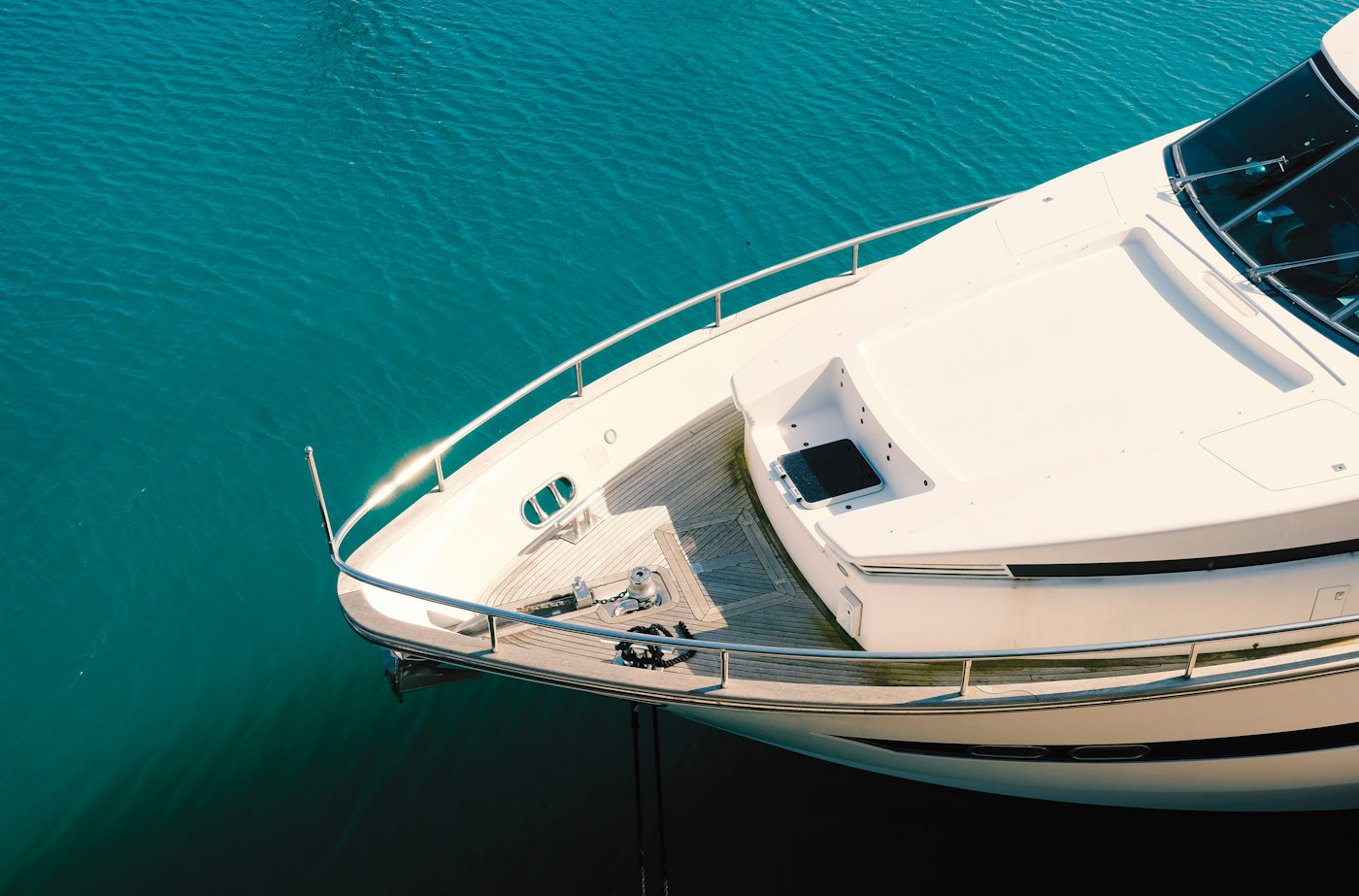
With so many different types of yachts to choose from, it can be hard to know your Flybridges from your Tri-Decks if you’re just starting your search. Although there is a growing number of terms used to describe the different types of yachts out there, many of the terms overlap or are used interchangeably.
If you’re on the market for a yacht, the team here at Van Isle Marina has compiled a review of the different terms you’ll likely come across when cruising through yachts for sale .
The term ‘boat’ is used to describe any water vessel, propelled by either sails, an engine, or manpower. It’s not very specific, which means yachts, dingeys, and everything in between technically falls under the blanket term ‘boat’.
The term ‘yacht’ brings a little more prestige and sophistication with its origin story, being derived from the word “hunter” in Dutch. Hundreds of years ago, the Dutch navy built and sailed yachts to literally hunt down pirate ships in shallow waters. That’s part of the reason why both powerboats and sailboats can be classified as ‘yachts. It didn’t take long for other nations to catch on, using the Dutch idea for navy ships and eventually racing vessels and private, recreational vessels.
The size is one of the most common factors used to determine whether a boat should be classified as a yacht or not. When it comes to size, there are no official rules, so it depends on who you ask. Some will say the boat needs to be at least 35 feet to qualify as a yacht – others will say even longer. If you’re yacht is more than 75 feet, you’re approaching Super Yacht range, and if it’s more than 250 feet you’re in Mega Yacht territory.
Despite the uncertainty around size-based classification, typically, you’ll know it when you see it. That massive vessel that looks like it could sleep a 10+ and needs a dozen ropes to secure it to the dock? That’s definitely a yacht. And that small, single-level boat with not a lot of room to stand? That’s definitely a boat.
The downside of using size as the only determining factor is it’s black and white. If you set the boundaries with size, there’s no room for gray area. Let’s explore more…
Luxury Living

Yachts are an international symbol of luxury and wealth around the world. The yacht is synonymous with luxury, which can actually help us when classifying boats as yachts or not. If the boat is built with luxury top of mind, it is probably a yacht.
How do you spot luxury? From the shore, the exterior of a yacht is typically sleeker with distinct accent styles. But the real luxury becomes evident when you step on board. Yachts are built with spacious living areas, full size kitchen and bathrooms, advanced TV and audio systems, and designer-style furnishings. You might even find hot tubs, a pool, and a helicopter pad in ultra-luxurious cases.
If you’re closing in on the purchase of your new boat and you’re still unsure whether it’s a yacht or not, the price tag should give you some indication. Yachts are known to cost far more than boats, due to their level of luxury and comfort, size, and usage. For a brand-new yacht, you can easily pay $100,000+ per foot, which means you’re looking at millions of dollars for the total price.
There are other costs to consider as well. Because yachts are larger, most will require a professional crew (or at least a captain) on board. Then there’s maintenance and insurance, both of which will cost more for a yacht.

Another key differentiator between boats and yachts is what their purpose – what they’re being used for out on the water. There is no nailed down definition of what makes a yacht a yacht, but most boaters consider a yacht to be any type of sea vessel that is used strictly for recreational or pleasure purposes like cruising , entertaining, water sports, fishing , or year-round accommodations.
The only purpose of a yacht is recreation. But more specifically, yachts are designed for personal pleasure and leisure, whether that’s long, ocean-crossing journeys or anchoring near a buzzing port town.
On the other hand, if the vessel is doing a job or being used for a specific activity, it’s not a yacht. If the boat is involved in any commercial activity, it’s only a boat. Even if it’s being used recreationally, for example fishing or watersports, the boat is still a boat.
Handling Conditions

When you’re out on the open ocean, you’ll have high winds and dangerous waters to deal with. In these conditions, size will definitely work to your advantage. And while you’re closer to shore, you can expect the conditions to be much calmer.
When it comes to dealing with conditions, one worthwhile classification system places boats into one of 4 categories, labelled A through D:
Class A : These are large yachts capable of handling high winds (force 8 on the Beaufort scale) and up to 13-foot waves in the open ocean. These boats are certainly yachts and are built for the open ocean.
Class B : While these yachts aren’t quite designed for the open ocean, they’re very capable craft. Also known as “ offshore vessels ”, Class B yachts are best suited for waters less than 200 miles (321km) from shore.
Class C : Class C boats are typically known as ‘boats’, as they’re designed for inshore and nearshore excursions – not the open ocean. These boats are fine with waves a few feet high, but anything higher than that is dangerous.
Class D : These boats are typically small ones and are not built for harsh conditions. These craft can handle winds of up to 25km/hour and waves just a couple feet high.
Types of Yachts
A yacht is first defined either as a sailing yacht, motor yacht, or gulet yacht, and then as a sports yacht or luxury yacht.
- Sailing Yacht: a yacht mainly propelled via wind and sails
- Motor Yacht: a yacht propelled via one or more motors
- Gulet Yacht: a hybrid yacht with both sails and motors
- Open Yacht, Cruiser, Cabin Cruiser, Express Cruiser: an otherwise uncategorized standard yacht for cruising and entertaining
- Luxury Yacht: a yacht that includes high-end finishes and features and the latest in modern performance technology. The term ‘luxury’ can precede any type of yacht, i.e. “luxury motor yacht”, “luxury sailing yacht”, etc.
- Sports Yacht : a yacht geared towards fishing, water sports, or cruising with a sleeker design and more powerful motor for faster cruising speeds. The term ‘sports’ can precede other types of yachts as well, i.e. “sports motor yacht”.
- Catamaran Yacht: a yacht with two hulls (pontoons) often made of fiberglass that can be used in shallow waters.
Yacht Style Categories

Yachts can further be grouped or defined according to their form and function, such as with flybridge, sedan, pilot house, and sportfish yachts, for example.
- Classic Motor Yacht: a yacht that was built between the 1920s and 1970s (before today’s modern technology began dominating modern yacht manufacturing). A modern yacht can be built based on the classic motor yacht style.
- Sedan: a popular yacht style with deck space above the hull and living quarters below. The living quarters of a sedan yacht are enclosed and single-level.
- Flybridge: a sedan-style yacht with an open deck and more comfortable living space above the main bridge of a vessel.
- Daybridge: a multi-level yacht that is even more open than a flybridge. Belize Motoryachts are known for creating this distinctive style of yacht.
- Open or Enclosed: a term used to describe the layout of and access to the flybridge. In an enclosed flybridge, access to the above flybridge is enclosed inside the living space. In an open flybridge, access to the flybridge above is open to the elements.
- Downeast Style: a low-profile yacht with a large working cockpit and small helm station. This highly recognizable style is inspired by the mid-1900s traditional Maine lobster boat. Back Cove yachts are a shining example of downeast-style inspired yachts.
- Pilothouse: A multi-deck yacht like a flybridge with a larger interior main deck.
- Sky Lounge: an enclosed area at the top of the vessel that provides the benefits of the view but with several amenities, protection from the elements, expansive windows and sometimes a sunroof.
- Cockpit Motor Yacht: a yacht with more cockpit space than deck space.
- Sportfish or Sport Fishing Yacht: A yacht used for fishing with a large cockpit, storage space, and the ability to handle rougher seas. These can also be referred to as Flybridge Sportfish or Sportfish Express and are built for longer durations out on the water.
- Convertible: a yacht that combines features of a standard motor yacht with a sportfish yacht to have entertaining space when you need it, and also fishing space when you need it.
- SUV: a yacht that combines features of a standard motor yacht and sport yacht.
- Tri-Decks : a superyacht with three levels of staggered, enclosed living space.
- Expedition Yachts: a large yacht with a deeper displacement hull for more stability and comfort during longer-range trips.
There are dozens of governing bodies, societies, and other organizations that set standards, classifications, and definitions in the world of boating. There are different authorities like this all over the world, so it’s a good idea to check-in with local groups or areas you plan to visit.
If you’re in the market for a new boat or yacht, head over to Van Isle Marina on Harbour Road in Sidney, BC. You can browse our selection of yachts for sale on our website, but be sure to stop by the marina to check out our facilities, fuel dock and Sea Glass Waterfront Grill .
250 656 1138
2320 Harbour Road, Sidney, British Columbia V8L 2P6 [email protected]
Marina Services
Marina Layout
Yacht Sales
- Link to Facebook
- Link to Instagram
©2024 Van Isle Marina | Design by Caorda
- Pontoon Boats
- Personal Watercraft
- nauticalknowhow
- Nautical Knots
- Tools and Calculators
What is a Yacht?
A yacht does not have to meet any specific requirements to be considered a yacht. For our purposes a yacht is any recreational boat of around 30 feet or more that includes at least one cabin and is used for cruising or racing. This definition is not a hard and fast rule to go by as there is no settled definition for the word at all or what specifically makes a boat into a yacht.
Because a yacht is not a specific type of easily identified vessel like a pontoon boat or a fishing boat, we’ll cover the features of what makes a yacht worthy of the name so make it easier for you to identify one in the wild.
Defining What a Yacht Is
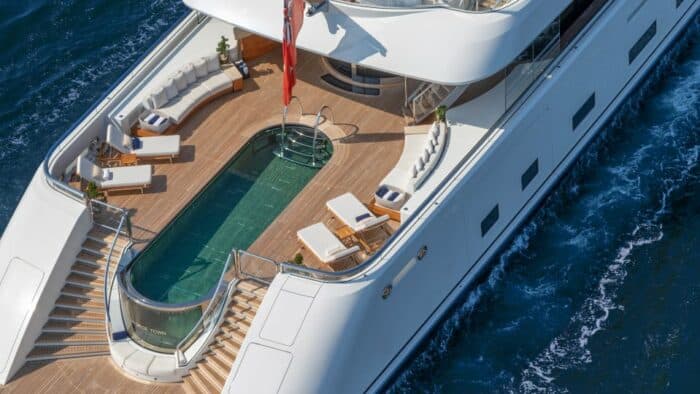
The difficulty in defining the term “yacht” is that, unlike the specific vessels mentioned above, a yacht is more of a description than a type. Yachts can be sailboats or motorboats, center console boats, house boats or any other kind of vessel that meets the generally accepted size and feature expectations of a yacht.
The definition I gave above includes a few key points:
- A yacht is a recreational boat
- A yacht is 30 feet long or more
- A yacht has at least one cabin
- A yacht is used for cruising or racing
This description allows you to weed out some things such as:
- Boats under 30 feet which most recreational boats are
- Specific purpose boats like commercial fishing vessels, barges, tugboats
- Most pontoon boats, speed boats for racing, jon boats and recreational fishing boats
Reaching a Definition
Usually when people think of yachts they’re thinking of a medium to large vessel that is well appointed and higher end with a lot of luxury features. The word evokes a sense of value and expense. We consider a yacht to be an expensive boat.
Yachts can be very similar to a cabin cruiser or day sailing boats , but the difference seems to be in size and what may be included above and beyond a “normal” boat. For these reasons, “yacht” as a term is sometimes hard to define and definitions will not be consistent from one source to another.
Motor Yacht Vs. Sailing Yacht
The initial definition of yacht that we provided doesn’t specify if a yacht is a boat that requires wind power to move or an engine. But the fact is that a yacht can be a sailing vessel or a powered vessel and either one can still qualify as a yacht.
Motor Yacht
The power source for a motor yacht is an engine. Some yachts are hybrid vessels which can run under sail but also have a backup engine in case of emergencies or if the wind is not reliable. These are sometimes called motorsailers.
Motor yachts are considered leisure vessels more often than sailing yachts due to how they work. A motor yacht takes less skill to operate than a sailing yacht.
Sailing Yacht
Sailing yachts run strictly on wind power. Most larger sail boats with cabins could be considered yachts. Many boaters still consider a sailing yacht a boat for people who are more adventurous and a little wild as they represent that idea of cutting loose at sea. A sailing yacht is harder to operate than a motor yacht and requires more skill.
A motor yacht is going to get you where you want to go faster than a sailing yacht. That’s not to say these aren’t fast sailing vessels as modern yachts can reach great speeds, but they are still at the mercy of the wind. For that reason you’ll often see far more motor yachts around than sailing yachts as they tend to be more convenient for most boaters.
Motor yachts have no concrete average speed thanks to numerous factors that go into what makes a yacht. The largest yacht in the world is nearly 600 feet long. Obviously a boat of this size has many variables that will affect its speed compared to a 60 foot yacht. That said, yachts of any size tend to have cruising speeds that range from 20 mph to 30 mph.
Because a sailing yacht is powered by wind only it will be slower, on average, than a motor yacht. Sailing yachts often reach speeds of just 5 mph to around 10 mph. The size and construction of the vessel, its weight, and the skill of the captain can all affect these numbers.
A motor yacht has to make space for an engine room, which can get quite huge especially on large yachts. Space is also needed for fuel tanks. On some mega yachts they have fuel tanks that can hold over a million liters of fuel, which is absolutely staggering and requires a large portion of the vessel.
Motor yachts are more likely to devote space to luxury amenities like hot tubs or even swimming pools. The largest motor yachts have multiple luxury cabins, helipads, tenders, gyms and more. Some motor yachts can have up to 8 decks. You can expect a motor yacht at 150 feet to have around 50% or more space available than the exact same length in a sailing yacht.
Sailing yachts can be designed smaller than motor yachts because they don’t need engine or fuel space. So a smaller sailing yacht can hold as many passengers as a larger motor yacht without sacrificing comfort or luxury. A sailing yacht is going to have a smaller and probably narrower structure than a motor yacht.
Sailing yachts often offer comfortable cabins but usually have few hotel-like luxuries on board. A sailing yacht needs a lower profile to function properly. They will have fewer decks as well.
Motor yachts lend themselves more towards really having fun at sea. These are true recreational vessels. This is owing to the fact motor yachts are more likely to have tender garages and include jet skis and other equipment for getting out and having fun.
Motor yachts also tend to be the ones that are more outfitted like small resorts. You can find dance floors, bars, swimming pools, jacuzzi tubs, gyms and more on some big luxury yachts. At some point they really start to look like small cruise ships. With the extra decks and of course because they don’t have masts in the way, there’s a lot more space for this kind of thing.
Modern sailing yachts have been designed with more luxury features than older models and it’s not unheard of to find a jacuzzi on a sailing yacht or even a cinema on some, but it’s still a rarity when compared to motor yachts.
Sailing yachts can be used for some more limited type fun at sea – lots of snorkeling, swimming, fishing and so on, just not to the extreme that a motor yacht will do. A lot of the appeal of a sailing yacht is the fact that it’s for sailing, so the act of sailing itself is the draw. Usually people who own and operate sailing yachts want to engage in the activity of sailing, rather than the extra things you might enjoy on a motor yacht.
Cost of Motor Yachts vs Sailing Yachts
Motor yachts are more expensive than sailing yachts. The initial cost can vary widely but it’s the long term costs that nail you. Fuel and maintenance costs over time for a motor yacht will always keep raising the price. The largest motor yachts may cost millions of dollars to buy outright and also have yearly operating costs in the hundreds of thousands or even millions if they are fully crewed. The highest priced yacht in the world has a $1.5 billion price tag.
A sailing yacht continues to coast along at a much lower cost in terms of necessary maintenance. After all, you never need to refuel your sailing yacht. Some smaller yachts may cost under $30,000.
Yacht Classifications
Yachts are often classified by size. As we defined early, any vessel over 30 feet can potentially be a yacht. But if you are talking about a vessel that is over 400 feet in length, it’s not an accurate picture to use the same term.
We often classify yachts using common size or metric prefixes. You may have heard the terms “superyacht” and “megayacht.” These are ways of attempting to differentiate between the sizes of yachts because some of these vessels can get massive. The world’s largest yacht, the Azzam, is about 600 feet long.
Large Yacht
According to the Commercial Yacht Code, a large yacht is any yacht that has reached 79 feet or more. At this size the boat needs to have an actual crew to keep it running. Anything under 79 feet would just be a standard yacht.
Super Yacht
To qualify as a super yacht, a vessel has to be at least 131 feet in length. Obviously this size means it needs a fairly extensive crew and, if it’s not a commercial vessel, it’s probably owned by someone extremely wealthy in order to maintain it.
The term mega yacht is a bit sketchy which is no surprise given how there’s only a loose definition for the word “yacht” in the first place. Mega yacht and superyacht are often used synonymously. However, for some people, the term mega yacht can only be applied when the vessel reaches at least 200 feet. This doesn’t seem to be a definite rule though so if you hear the term it’s still best to look at the specs of the boat to see what’s being referred to.
You hear this term a lot less frequently but it’s been tossed around to account for those yachts that would even leave a mega yacht in the dust. After all, if a super yacht is 131 feet and a mega yacht is 200 feet then a yacht like Azzam, at 600 feet, should probably be known by a different term since it’s so much bigger.
Giga yacht is sometimes used to represent these largest yachts. But again, this is an informal label for such a large boat and there are no hard and fast rules about what size a boat has to be in order to be called a giga yacht. In general it just means the biggest of the big.
Racing Yachts
If the point of the yacht is specifically to be involved in racing, then it will likely be stripped down of many of the more luxurious but unnecessary amenities seen in recreational and cruising yachts. Usually a racing yacht has less space for relaxing or sleeping, for instance, but there are definitely yachts being built that offer a lot of nice features while still being designed to race.
The Bottom Line
There are no distinct rules for the size of a yacht or what it can even do. A yacht can operate under motor power or under sailing and you can use it to race, to just have fun, or for cruising. They can range in size from just 30 feet all the way up to the massive 600 foot Azzam.
A yacht is a vessel that is fairly luxurious and used recreationally for a variety of purposes. A luxury yacht may be chartered for business or events and come with a full crew while smaller motor powered yachts and sailing yachts tend to be used for pleasure cruising.
My grandfather first took me fishing when I was too young to actually hold up a rod on my own. As an avid camper, hiker, and nature enthusiast I'm always looking for a new adventure.
Categories : Yachts
Leave a Reply Cancel reply
Your email address will not be published. Required fields are marked *
Save my name, email, and website in this browser for the next time I comment.
More in Yachts
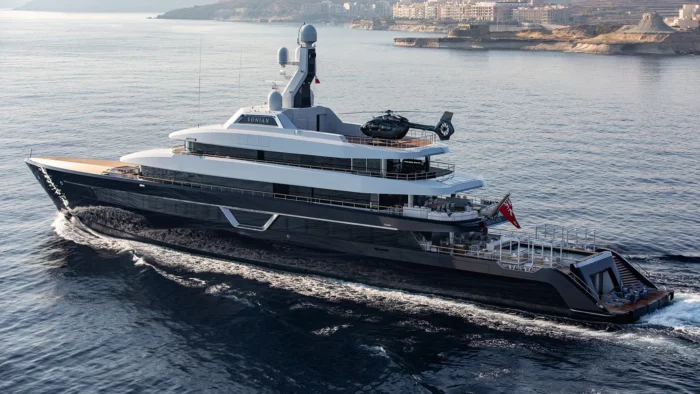
Lonian Yacht: An Insider's Guide
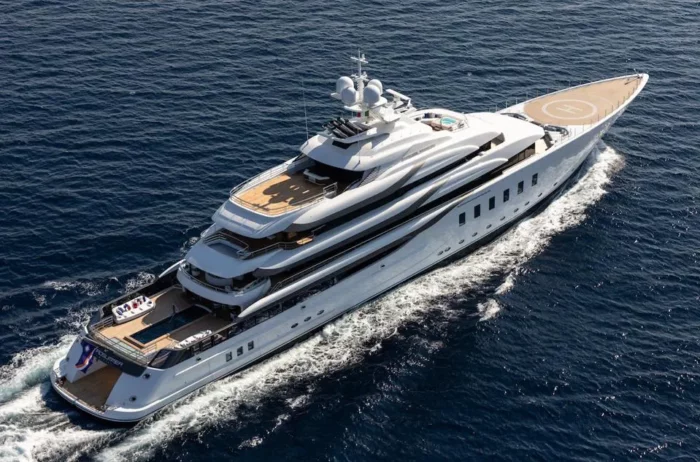
A Closer Look at the Madsummer Yacht
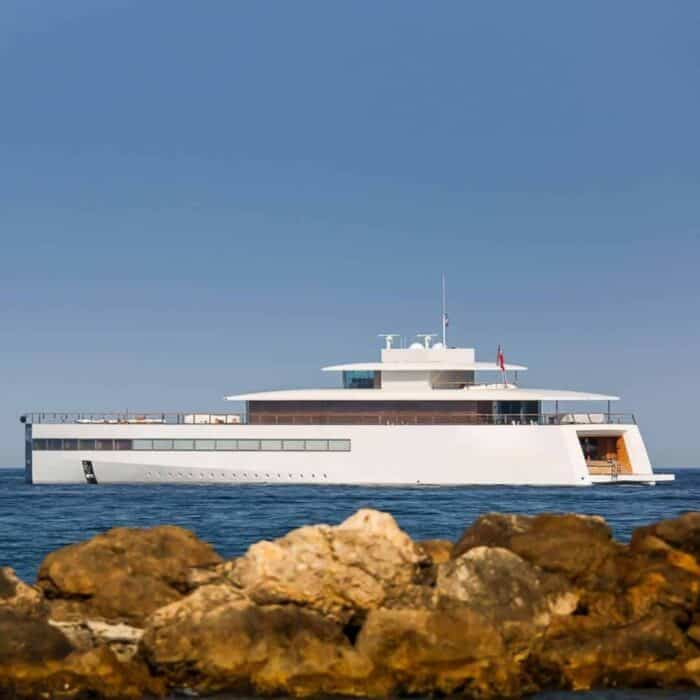
Your Insider’s Look at Steve Jobs’ Yacht Venus
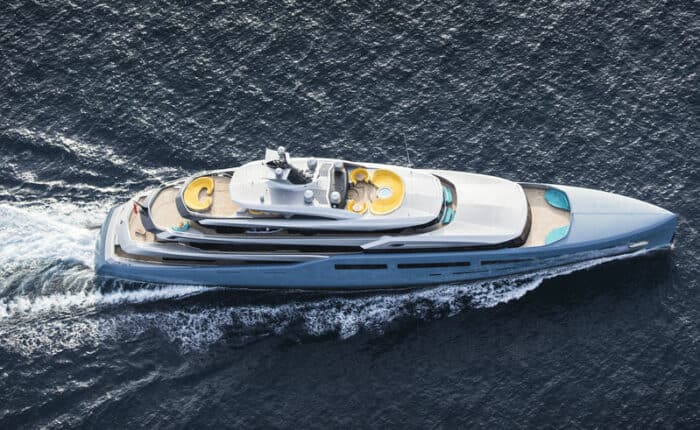
Your Insider’s Guide to the Aviva Yacht

The People’s Poncho Review and Ratings

Oru Lake Kayak Review

What Is A Gunwale?

131 of the Best Hawaiian Boat Names

167 Patriotic Boat Names
About boatsafe.
Established in 1998, BoatSafe is your independent guide into the world of boating, fishing, and watersports. We provide expert insights and detailed guides to help you find products tailored to your needs and budget.
Contact Boatsafe
- Address: 4021 West Walnut Street. Rogers, AR 72756
- Phone: (479)339-4795
- Email: [email protected]
Site Navigation
- How We Test
- Corrections Policy
- Privacy Policy
- Terms & Conditions
- Editorial Policy
- Affiliate Disclosure
Our Reviews

All content is © Copyright 2024. All rights reserved.

- How to , INFLATABLE BOATS AND RIBS , MOTOR BOATS , News , SAILBOATS
Yacht : modern meaning of the term and types of boats
- Luca D'Ambrosio
- February 25, 2023
The etymology of the term yacht comes from the Dutch word ‘jacht’, which was used in the past to define the fast sailing vessels used to hunt down pirates along the coasts of northern Europe.
Today, the term ‘yacht’ is used to describe all recreational vessels, whether sailing or motor-powered, with at least one cabin that allows the crew to sleep on board.
There is no established definition for the length of this family of boats, but common usage tends to define a yacht as a vessel longer than 33 feet, or about 10 meters.
As mentioned above, a yacht may be equipped with sailing, motor or mixed propulsion. It can have more than one hull, and if it exceeds 25 meters it also deserves the definition of superyacht . When a yacht is over 50 meters it is called a megayacht and, more and more frequently, when it exceeds 100 meters it becomes a gigayacht.
A yacht normally flies a flag that corresponds to the country where the vessel is registered, not least because, if it does not, it may be captured and taken to the nearest port for ‘flag survey’. As far as international maritime law is concerned, the yacht is considered in all respects to be the territory of the country of the flag it flies, to whose sovereignty the crew is subject.
A yacht flying the flag of a country, unless there is well-founded suspicion of illegal activity, can only be stopped for inspection by the military vessels of that country. When a yacht enters the territorial waters of a country other than that of its flag, it is obliged to fly a courtesy flag.
This is tantamount to a declaration of submission to the navigational laws of the country in which it is sailing.
Sailing and motor-powered yachts
The first major distinction is between sailing yachts and motoryachts. The current worldwide spread of these two families has shifted decisively towards motor yachts, which make up about 75% of the total sailing fleet.
Progress and design have produced many different categories of motor yachts, so let’s discover them together.
Motoryachts
Seen from the stern, a flybridge yacht is often equipped with a “beach club”, a platform that facilitates access to the sea and on which water toys are placed or simply used for diving. A staircase, or even two symmetrical staircases, leads from this platform to the main deck. Sometimes there is a “garage” between these two staircases to house the engine room, a tender and other on-board equipment.
The main deck is characterized by the presence of a helm station, inside of which a large open-space salon houses settees and a galley. The helm station often leads below deck, also known as the lower deck, where the sleeping quarters, or cabins, are normally located.

The foredeck often has a large sundeck bordered by a “bowplate” for hauling anchor. The bow is often “fenced in” by the handrails, which are vital grips for safety at sea.
Let’s get to why a yacht is called a flybridge. The flybridge is an upper deck, open 360 degrees and often covered by a hard-top, a roof usually made of fibreglass. The flybridge usually has an additional helm station to steer from a more panoramic position. An additional galley is often located on the flybridge, as well as additional lounge seating and sun decks.
Open Yachts
An open yacht has no flybridge and its main deck is commonly all open. The helm station can frequently be sheltered by a T-Top. Below deck, depending on the length of the yacht, there are living spaces for the crew which may include dinette, cabins and facilities. Open yachts can be walk-around, i.e. with the possibility for passengers of walking freely around the perimeter of the boat, or they can have an enclosed bow and thus have a raised deck.
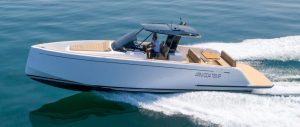
A coupe yacht is a yacht without a flybridge, characterized by a sporty design, with the main deck open aft. Very often it has a sunroof and is always equipped with side-decks connecting the stern to the bow. It is a vessel that, depending on its size, is suitable for medium to long-distance cruising.
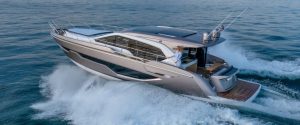
This is an important type of yacht, which has its origins on the American East Coast where it was used to catch lobsters. It has a romantic, sometimes vintage aesthetic, and is endowed with sinuous lines that, for some, are evocative of the 1950s. Very suitable for cruising and conviviality, thanks also to a large sofa in the cockpit, the lobster is an iconic boat that offers plenty of comfort and space below deck for at least one cabin and one head.
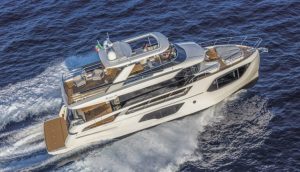
The trawler is essentially a yacht for owners who want to spend a lot of time on board. This is why interior volumes are maximized and the upper deck is always present. Also part of the trawler family are the famous Menorcan boats, inspired by the llaüts of the Menorca island..
Increasingly popular among motor yachts, too, is the multihull, due to its inherent features of stability and capacity. In most cases it is a catamaran designed for long stays at sea.
Sailing yacht
Sailing yachts are vessels where propulsion should mainly rely on the power transmitted by the wind. In the past, sailing yacht engines were low-powered and mainly used for entering and leaving ports, but today, for obvious reasons of practicality and ease of use, they have enough power to make the sailing yacht cruise at a speed at least equal to its theoretical hull speed. This means that sailing yachts can be used efficiently even in the total absence of wind.
A sailing yacht can be rigged in many different ways, these being the most common in modern times:
Sloop : this is the most common rigging on modern boats, characterized by the presence of a single mast with a mainsail and a jib or genoa. Sloop rigging has become popular over the years because it is the easiest to handle with a small crew and also offers the best ease of use/sailing performance ratio.
Cutter : Widely used for long distance sailing, it is characterized by the presence of a mainsail and two jibs rigged on a single mast. Normally the two jibs are a genoa and foresail that are used individually, depending on the weather conditions.
Ketch : this is the most commonly used rig on two-masted sailing yachts, with a mainmast, rigged with a mainsail and genoa, and a mizzenmast, forward of the rudder shaft, rigged with a single mainsail. The splitting of the sails makes this type of yacht suitable for sailing in bad weather.
Yawl : exactly the same as a ketch but with the mizzen mast located aft of the rudder shaft.
Sailing yachts can be monohulls or multihulls, i.e. catamarans or trimarans, but in all cases they can be divided into these categories:

Easy to handle and with plenty of space above and below deck, this type of yacht is normally characterized by an unbalanced length/width ratio favouring the latter, a small sail area and more powerful than average engines.
The interiors are fully equipped and sophisticated, with each cabin often having its own en-suite head.
The deck plan and sailing equipment are simplified, often electrified and minimal.
Cruiser-Racer

This yacht, while still featuring a luxurious and complete interior, also has all the equipment needed for sail fine-tuning and a generous sail area.
This is a category where special attention is paid to both the overall weight of the boat and the hull shape.
The hull lines are in fact designed to enhance performance and, inevitably, this results in a slightly smaller interior than that of pure cruising yachts of the same length.
Racer-Cruiser

The owner who buys this type of yacht has already competed in club competitions and now wants to engage in higher level racing. The hulls are light and can sometimes be made of carbon, and all the sail adjustments are fine-tuned to achieve maximum performance.
The deck plan is definitely designed for crewed racing and the sail area/displacement ratio is unbalanced in favour of the former, making this yacht more difficult to handle with a smaller crew but, conversely, capable of performance similar to a pure racing yacht.
A pure racing yacht is a sailing yacht built exclusively for racing. Free from any commercial constraints, it is built according to the type of race to be competed in and, above all, the rating to be obtained. The interiors of this boat are minimal. This yacht is capable of planing and sailing upwind at very low wind angles, but is almost never used for recreational purposes.

Leave a Reply Cancel reply
Your email address will not be published. Required fields are marked *
Save my name, email, and website in this browser for the next time I comment.
Language switcher
Browse categories.

You might be interested in
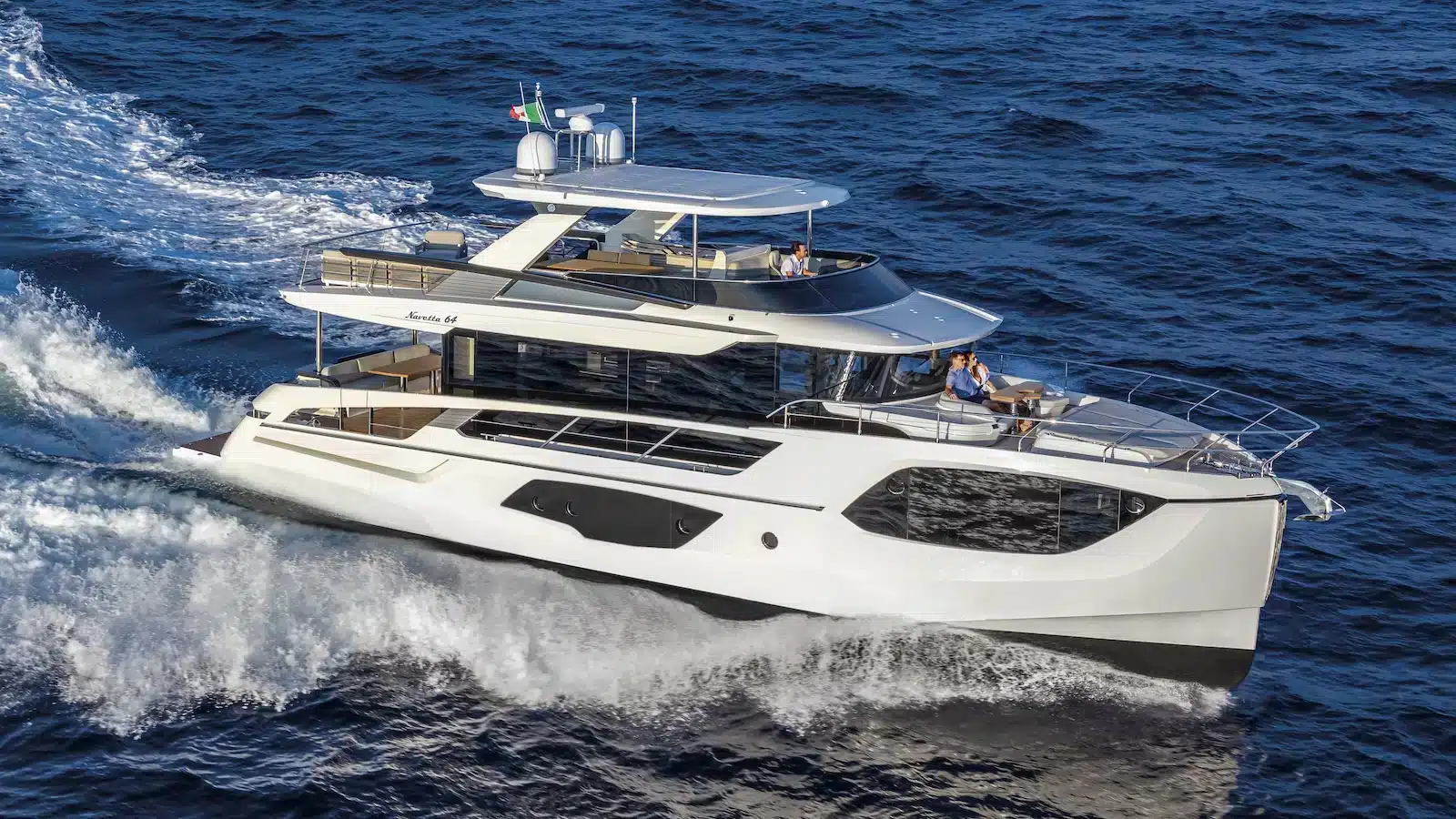
Absolute Yachts at Cannes with a contemporary and innovative collection
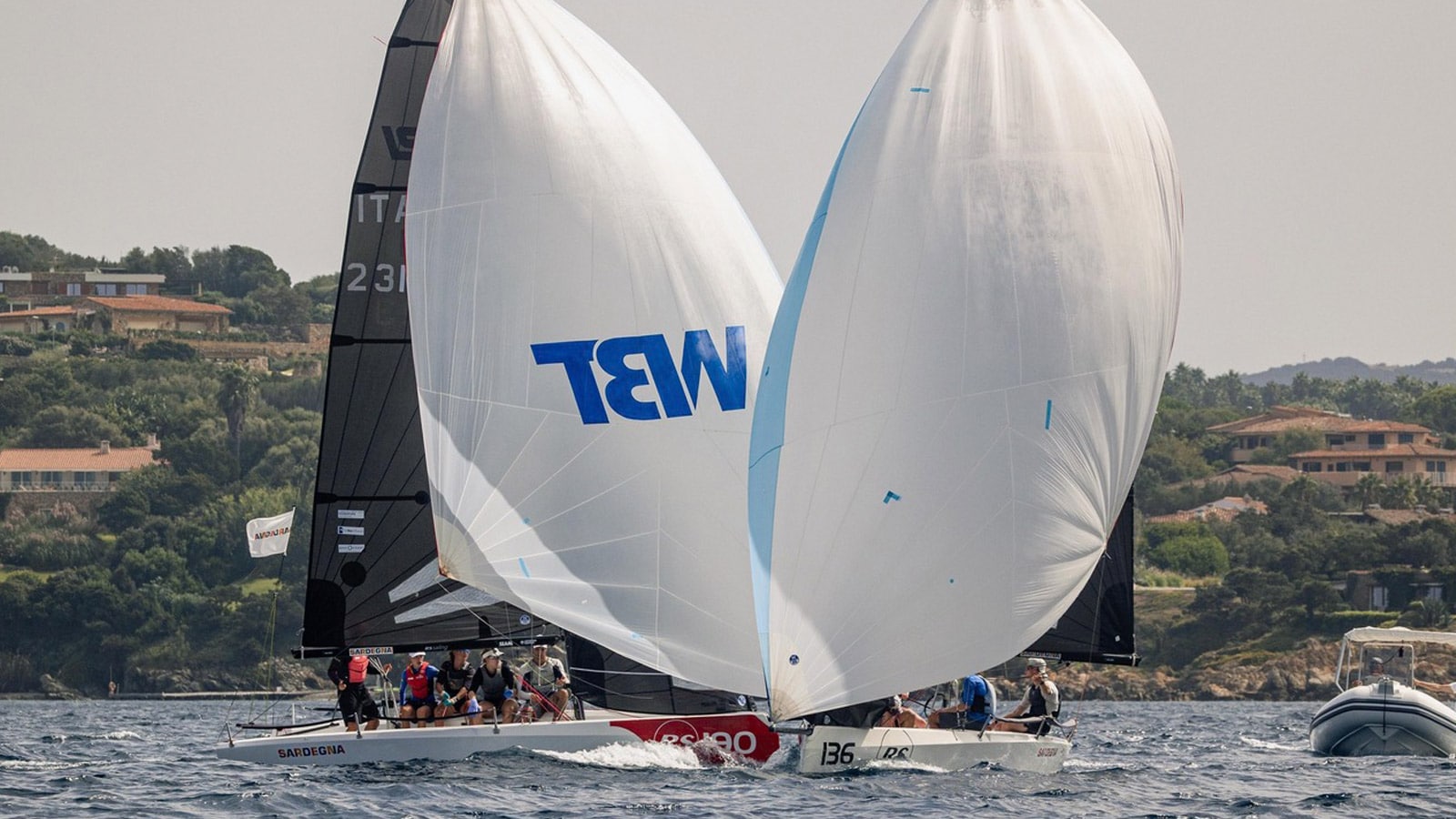
Innovative Sailing World Championship: English crew triumphs
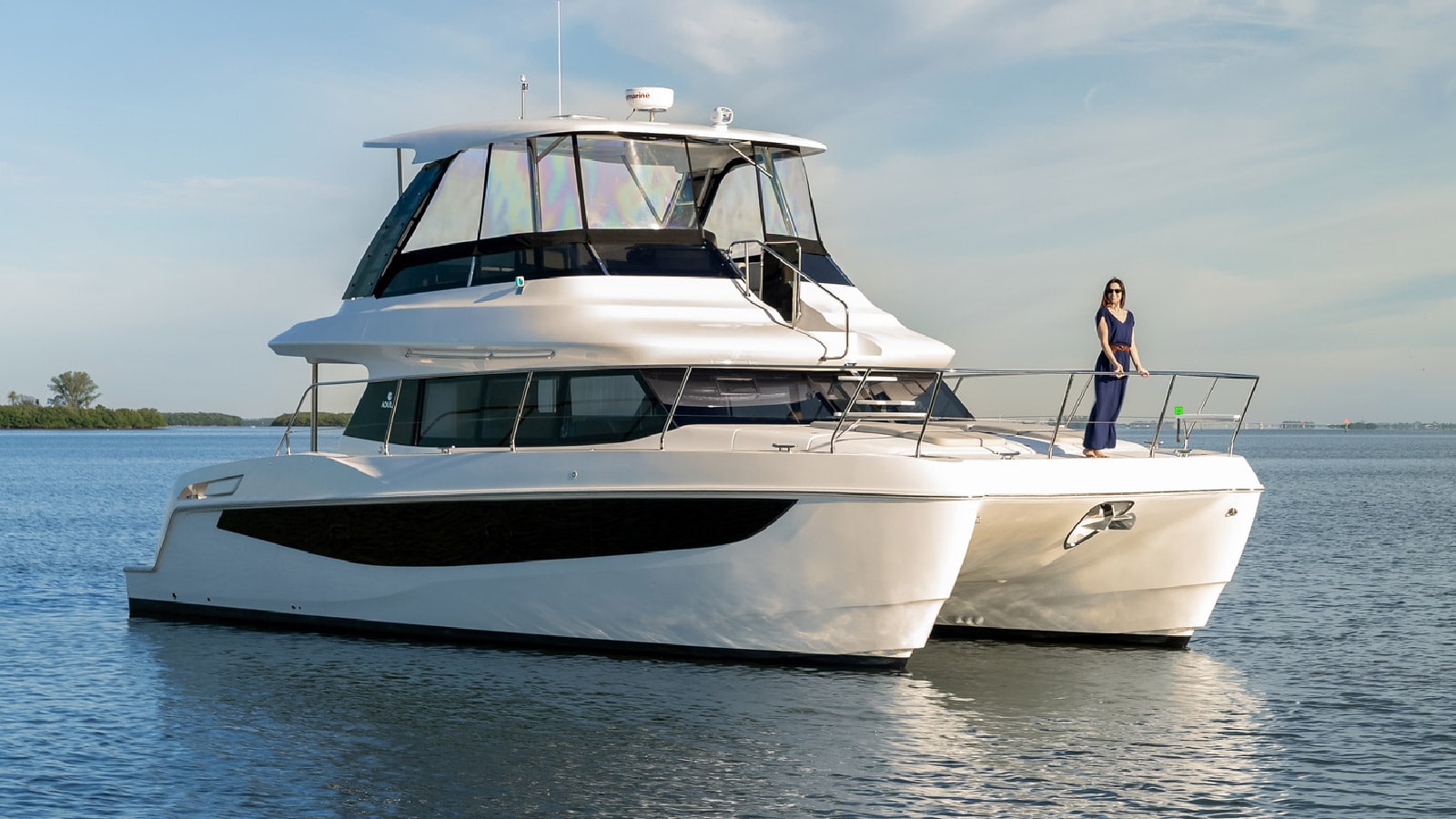
Aquila Power Catamarans conquering Cannes
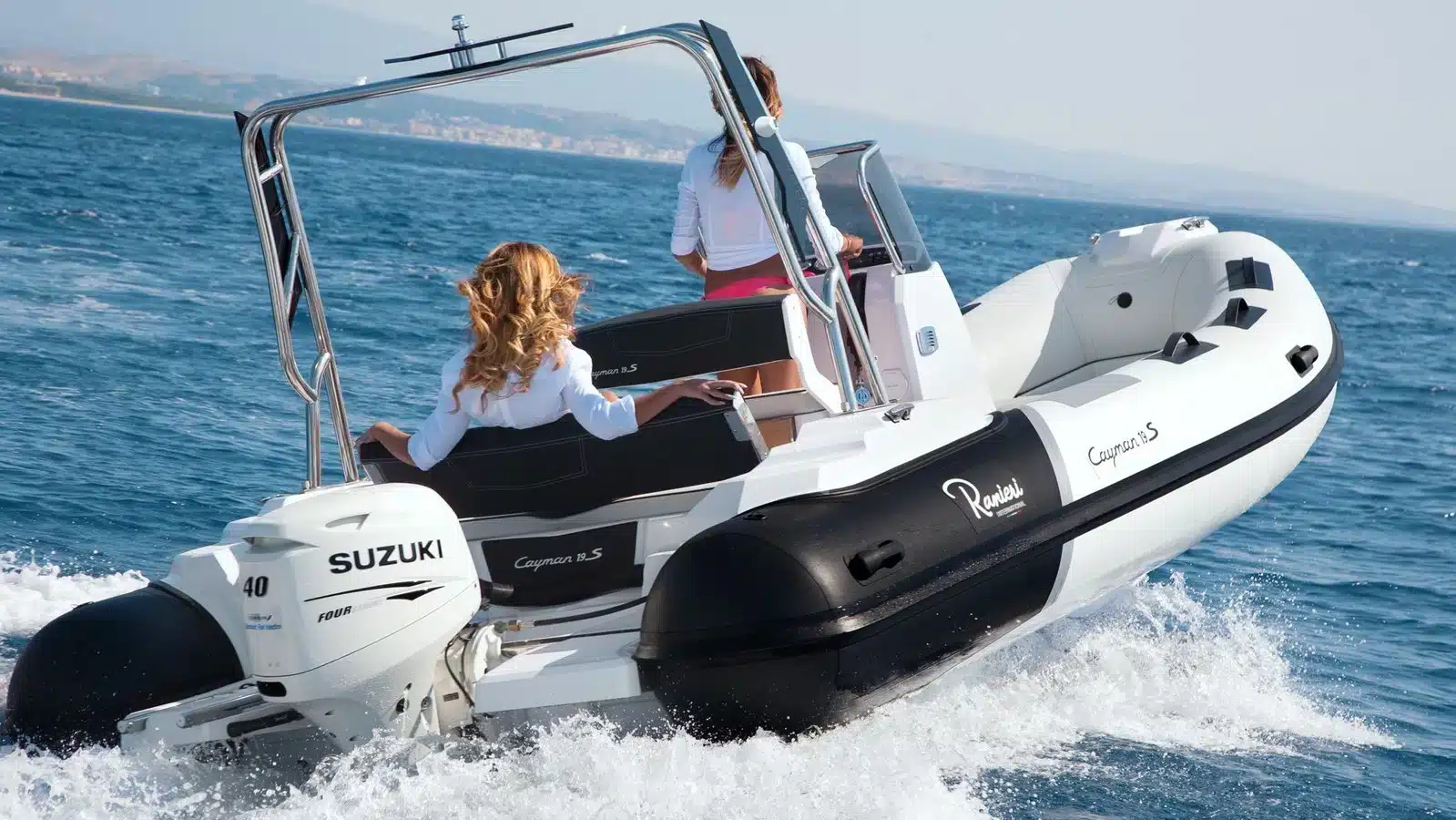
Ranieri Cayman 19 Sport: power and character

© 2021 – THE INTERNATIONAL YACHTING MEDIA Designed by BLive Communication
ABOUT YACHTINGNEWS.COM
Yachting News is an interactive multimedia magazine dedicated to the world of boating.
The International Yachting Media is the worlds most widely read boating magazines network. Whit its portal It broadcast its original contents in five languages and in more than 200 countries developing 950,000 views a week. Our web portals are the main source of information for yacht and boat owners, the place where they can find anything about their boating passion.
THEINTERNATIONALYACHTINGMEDIA.COM | SUPERYACHTS.NEWS | YACHT DIGEST
VIRTUAL BOAT SHOW | TUTTTOBARCHE | TOUSLESBATEAUX | TODOSLOSBARCOS
BOATING NEWS FREE APP

To provide the best experiences, we and our partners use technologies like cookies to store and/or access device information. Consenting to these technologies will allow us and our partners to process personal data such as browsing behavior or unique IDs on this site and show (non-) personalized ads. Not consenting or withdrawing consent, may adversely affect certain features and functions.
Click below to consent to the above or make granular choices. Your choices will be applied to this site only. You can change your settings at any time, including withdrawing your consent, by using the toggles on the Cookie Policy, or by clicking on the manage consent button at the bottom of the screen.
Subscribe For Latest Updates
Sign up to receive the best of Yachting News, sea trials, boat review and world premieres .
The only ADVERTISING FREE newsletter

IMAGES
VIDEO
COMMENTS
A 45-foot cruising yacht in 2010 The superyacht Azzam, the longest private yacht, as of 2018. [1]A yacht (/ j ɒ t /) is a sail- or motor-propelled watercraft made for pleasure, cruising, or racing. [2] [3] [4] There is no standard definition, though the term generally applies to vessels with a cabin intended for overnight use.To be termed a yacht, as opposed to a boat, such a pleasure vessel ...
That delineation of course, is just where our basic "entry-level" yacht begins. Yachts can range up in size astonishingly. Any yacht that is 79 feet long or longer is classified as a "large yacht." Beyond a length of 130 feet, the vessel is typically called a "super yacht" (sometimes written as one word, superyacht).
1. Luxury Yacht. Yachts are normally classified as any watercraft that can be used for pleasure or sport and can range from 30 ft to over 100 ft. While a yacht can be as small as 30 ft. long, a yacht is often considered a cabin cruiser until it is 39 ft. or more, then it is considered a proper yacht.
Generally, a yacht is defined by its length, luxurious amenities, and purpose for leisure rather than work. While there is no universal definition, a boat is typically considered a yacht when it exceeds 33 feet (10 meters) in length. The length is a crucial factor in determining what size boat is considered a yacht.
The maritime definition of a yacht states that it should be a private pleasure ship of at least 33 feet in length. However, it's more common to consider boats in the 35-40 foot range as yachts. ... When defining a yacht, the amenities it offers can be just as important as its size. A yacht typically provides luxurious features you won't find ...
How is yacht size measured? Length Overall (LOA) is the most widely used metrics of yacht length. It is measured from the aftmost tip of the hull to the furthermost point of the stem, measured parallel to the waterline. It is probably the only yacht length definition you need to know as an owner. *For yachting geeks out there, here are other ...
Large yacht. A large yacht is a pleasure vessel with a load line length equal to or over 24m. Almost all the flag administrations have adopted safety codes dedicated to large yachts and this is, therefore, the only definition having a universal meaning in the international regulatory framework of yachts.. Commercial yacht
Yacht Definition & Origin. The word yacht comes from the Dutch word "jacht", which means to hunt, and refers to the quick and lightweight sailboats the Dutch navy used to pursue pirates and other enemies in shallow waters. Today, the word takes on a very different meaning. While there is no strict definition of the word today, a yacht is ...
Definition of a Yacht. Understanding what defines a yacht involves more than just its size or luxurious appeal. A yacht is a vessel used primarily for leisure, cruising, or racing. Typically, yachts are larger than other recreational boats, often exceeding 33 feet (10 meters) in length, which is a key factor when a boat is considered a yacht.
We can differentiate yachts from boats based on size, amenities, mode of propulsion, function, and style. Yacht definition is incomplete without considering its size. It can vary between 33 feet to 79 feet. Read along to get a detailed understanding of what is a yacht and what it entails. Posted on: 31 Mar.
A yacht is a water vessel used for recreation, racing, or cruising, powered by sail or motor. A yacht can be a medium-sized water vessel or a small ship used for private and official purposes. However, there is really no standard definition because you can use this term for any watercraft with cabins, accommodations, and amenities for overnight ...
Sail yachts are powered by the wind and are perfect for those who want a more adventurous boating experience. They are typically larger than motor yachts and offer more space for guests to relax and enjoy the scenery. 3. Catamarans. Catamarans are two-hulled vessels that are known for their stability and comfort.
A boat becomes a "ship" often once it's reached a specific size, which tends to be on the bigger side and suitable for sea travel. In most cases, ships serve as working vessels, such as transport or cruise liners. "Yachts" are also more substantial, but they're solely recreational vessels and often used for luxury purposes.
Defining a Yacht. Size is the primary factor in determining if a boat can be considered a yacht. While there is no official point at which a boat becomes a yacht, anything over 40-feet in overall length could conceivably be considered a yacht. In addition, as you move bigger in size, you will probably get into "mega-yacht" or "superyacht ...
One of the most noticeable differences in the yacht vs boat comparison is size and design. Size: Yachts are typically much larger than boats, often exceeding 40 feet in length, with some luxury yachts stretching well over 100 feet. This substantial difference in size allows yachts to offer more space for accommodations, entertainment, and ...
Generally, a yacht is considered to be a vessel that is longer than 40 feet. However, there are different categories based on size. These categories include cruising yachts, superyachts, and megayachts. Cruising yachts are typically between 40 and 80 feet in length and are designed for leisurely trips and coastal cruising.
What defines a yacht - Cruisers, superyachts and mega yachts. These days there are two types of yacht, sailing yachts and motor-powered yachts. Size-wise, yachts tend to be anything from 10m long to hundreds of feet. If you own a luxury craft less than 12 metres long it's usually called a cabin cruiser, sometimes simply a cruiser.
Superyachts are expected to be at least 24 meters or around 79 feet long. Most superyachts are longer than this, though, and reach lengths of over 100 meters. The longest superyacht at the moment is the Azzam at 180m or 590ft, which is valued at around 600 million dollars. 4. Megayacht.
Size. The size is one of the most common factors used to determine whether a boat should be classified as a yacht or not. ... There is no nailed down definition of what makes a yacht a yacht, but most boaters consider a yacht to be any type of sea vessel that is used strictly for recreational or pleasure purposes like cruising, entertaining ...
The answer is, it depends. When I started writing about boats over two decades ago, the Mason-Dixon line stood firmly at 80 feet. That was the length overall where we stopped calling a model a "boat" and switched to the term "yacht.". Editors, at the time, reasoned that once a boat owner hit 80 feet length overall, hiring a crew was no ...
Yachts can be sailboats or motorboats, center console boats, house boats or any other kind of vessel that meets the generally accepted size and feature expectations of a yacht. The definition I gave above includes a few key points: A yacht is a recreational boat. A yacht is 30 feet long or more. A yacht has at least one cabin.
Today, the term 'yacht' is used to describe all recreational vessels, whether sailing or motor-powered, with at least one cabin that allows the crew to sleep on board. There is no established definition for the length of this family of boats, but common usage tends to define a yacht as a vessel longer than 33 feet, or about 10 meters.
Megayacht - Generally any vessel over 200 feet long. Until about a decade ago these were considered the largest private yachts in the world. However, the envelope has continued to be pushed and now these are the second tier in terms of size. Gigayacht - A newer term coined to describe yachts over 300 feet in length.